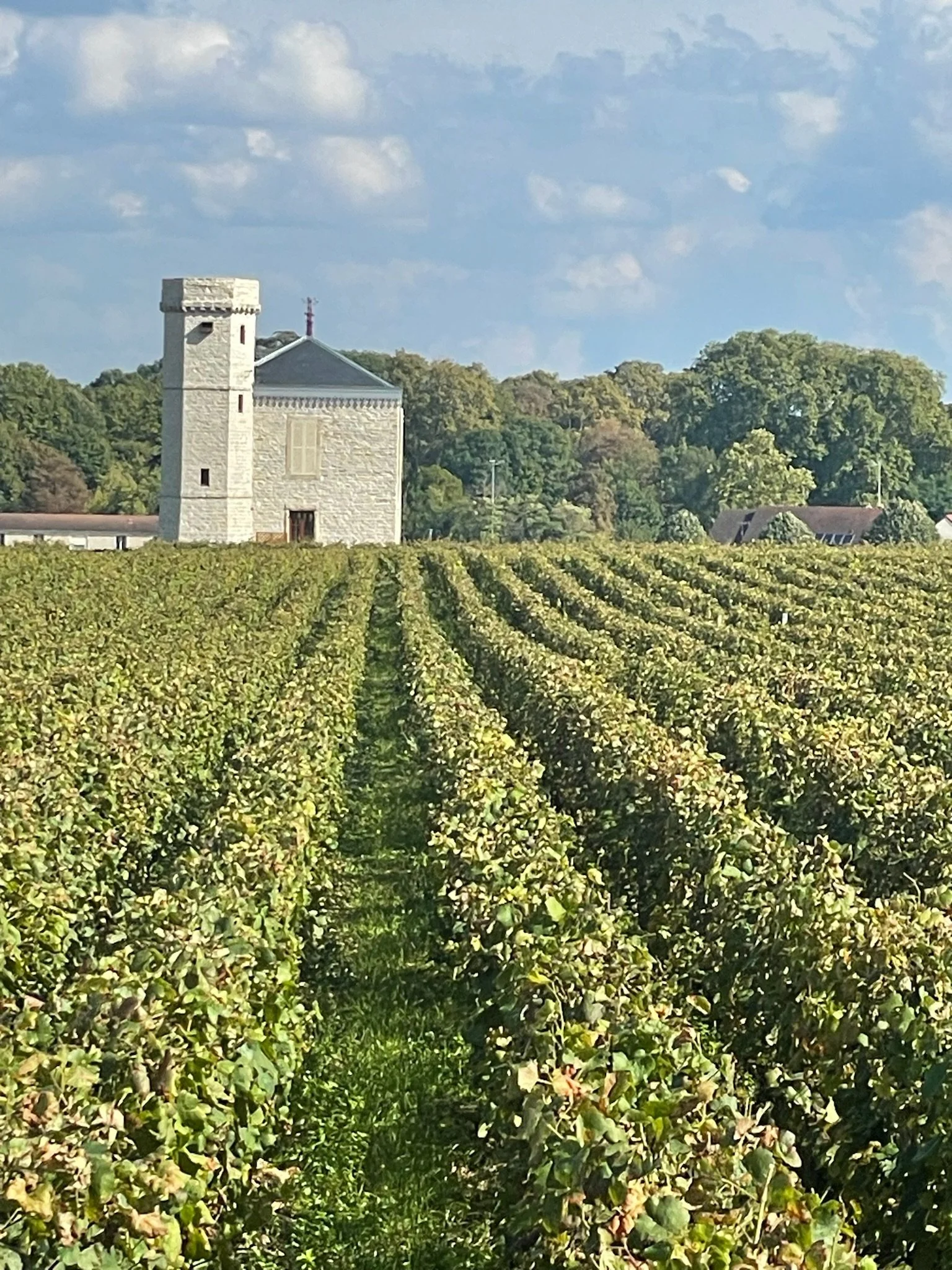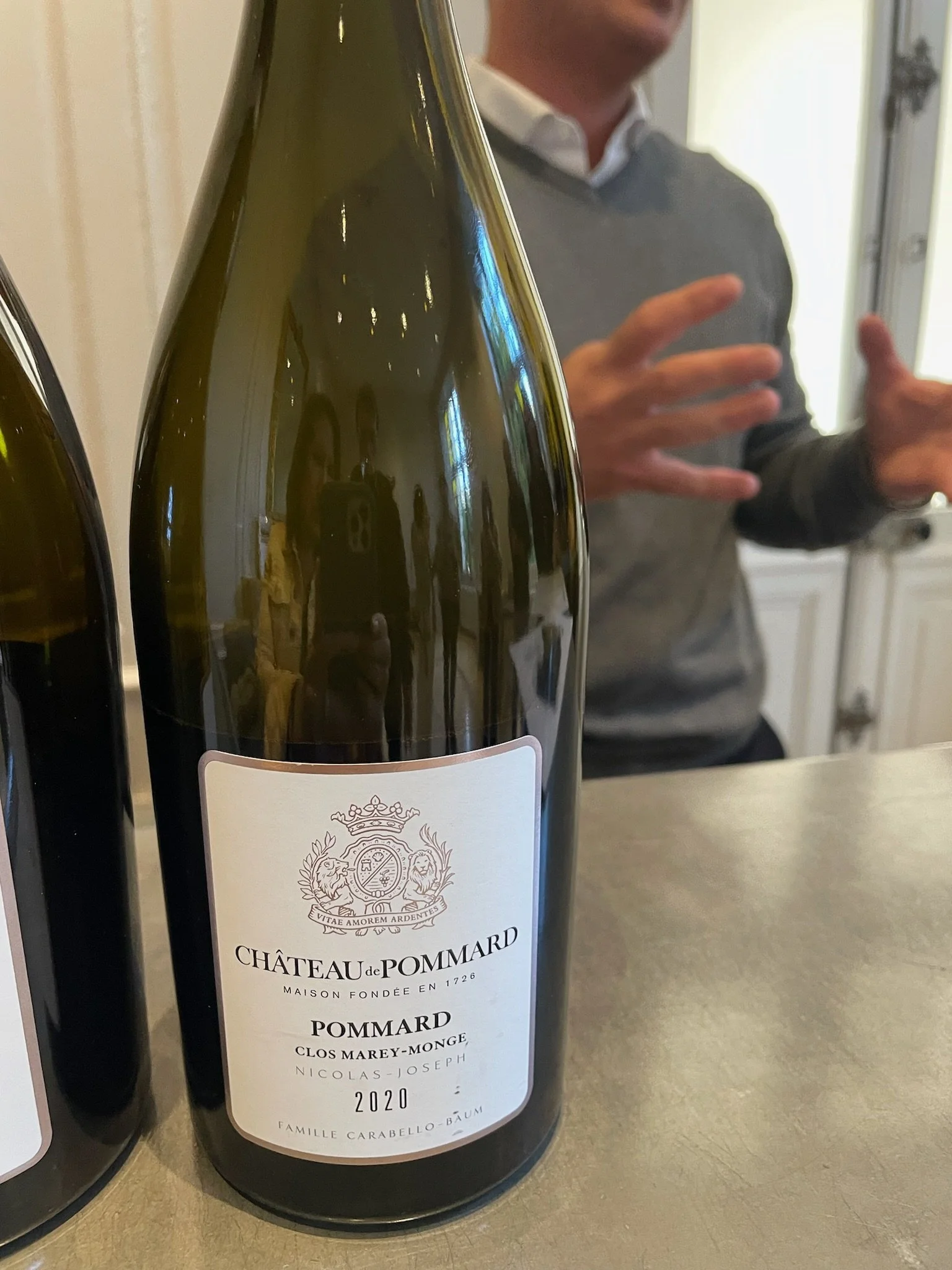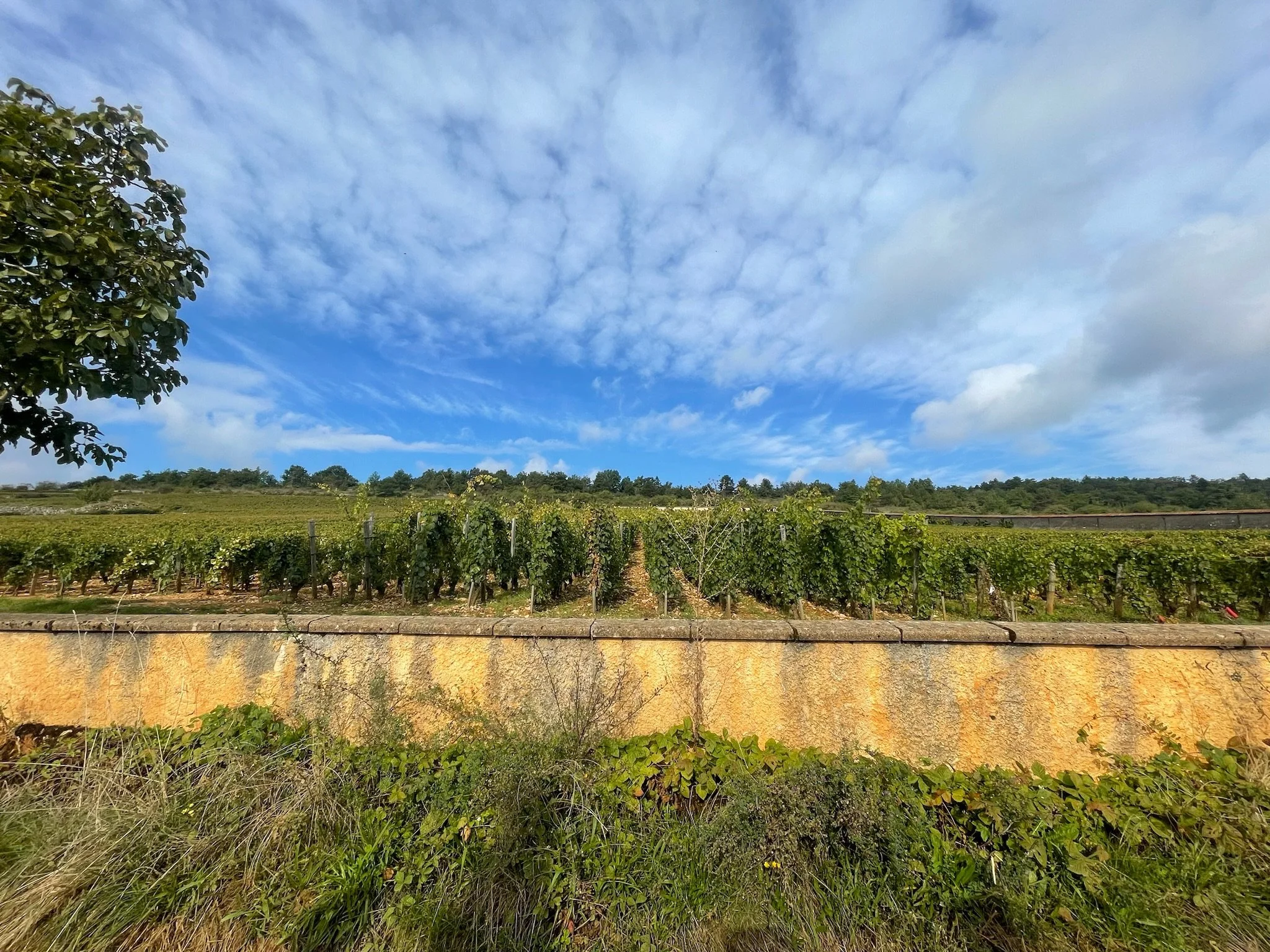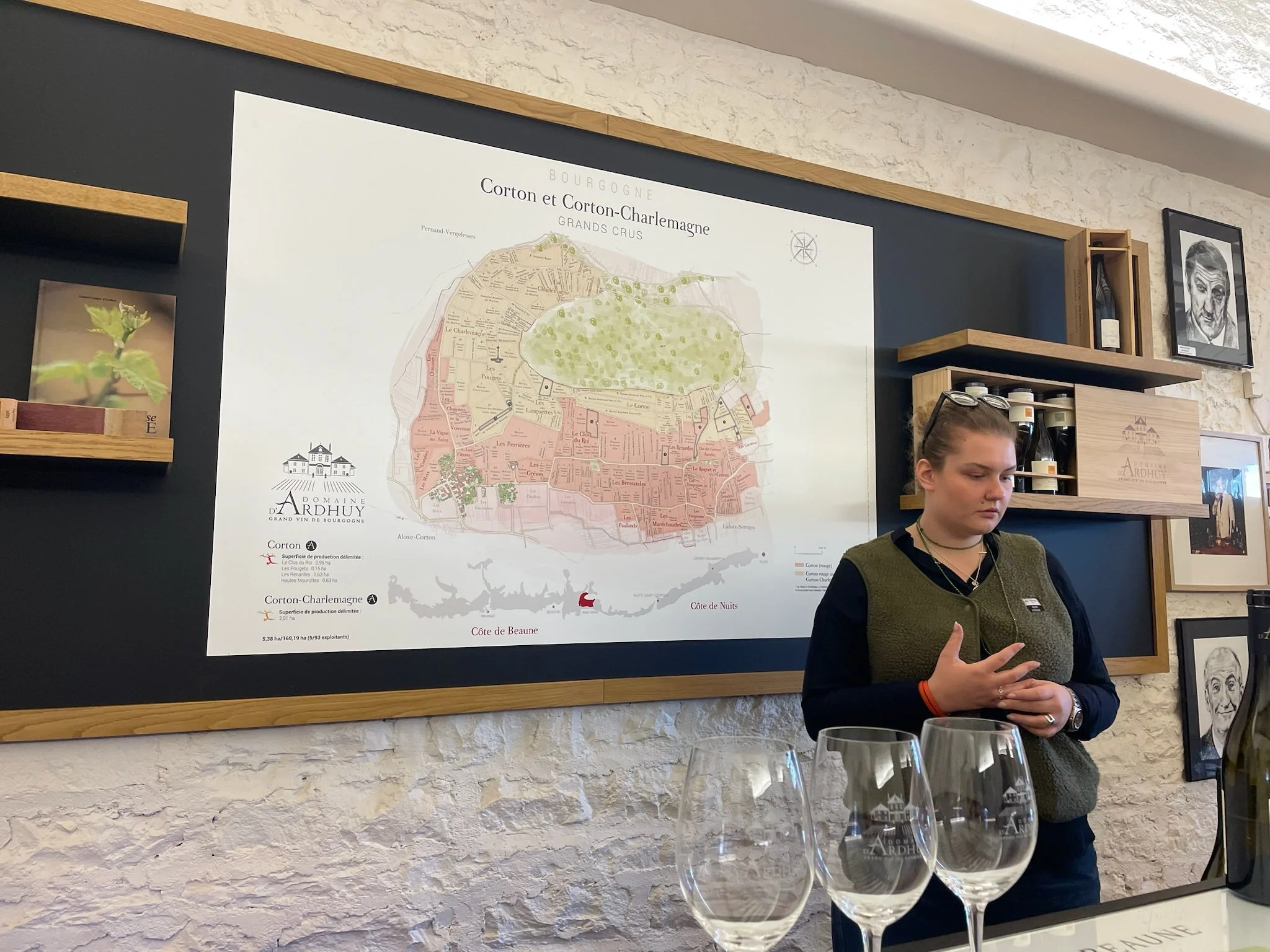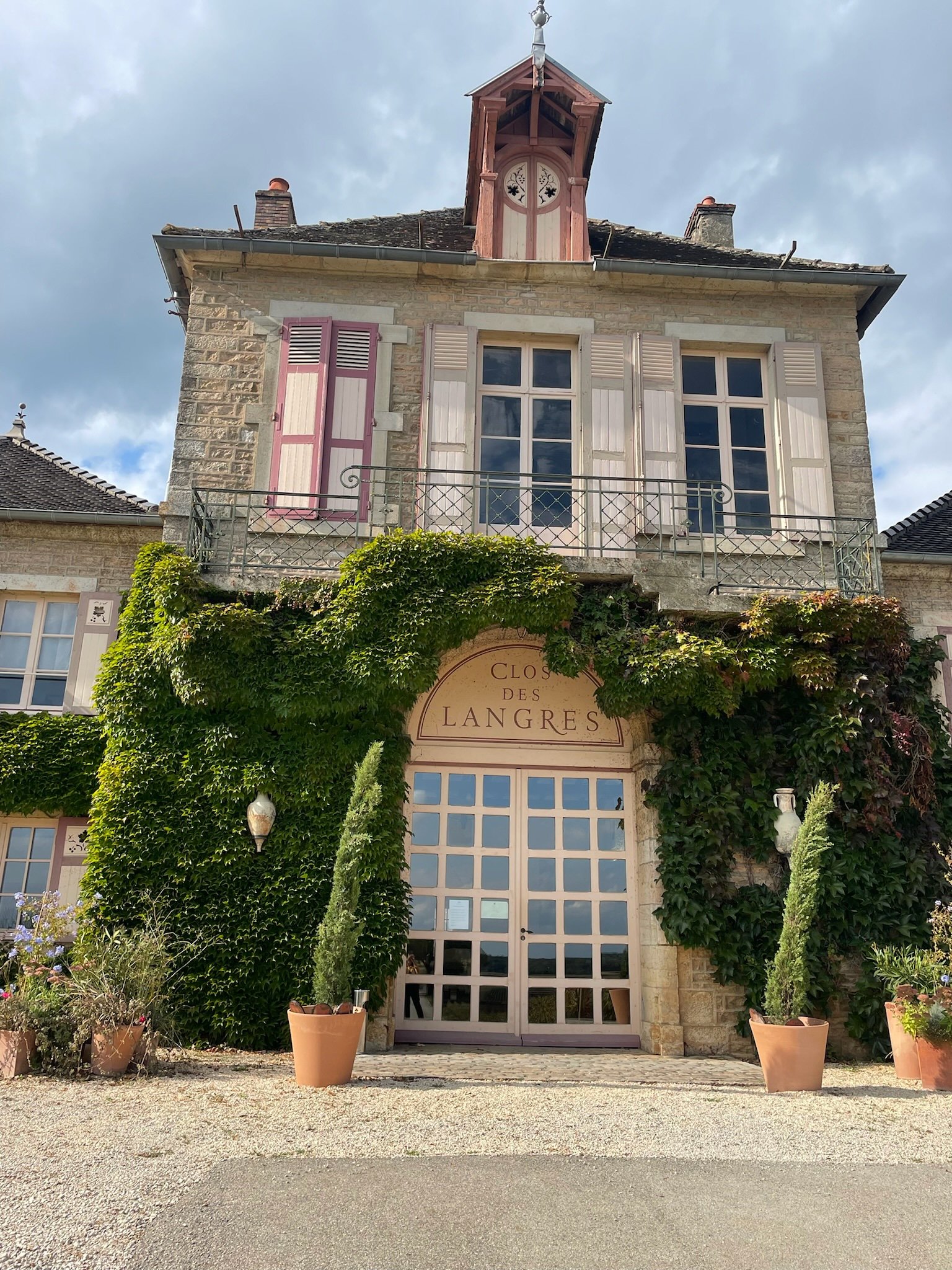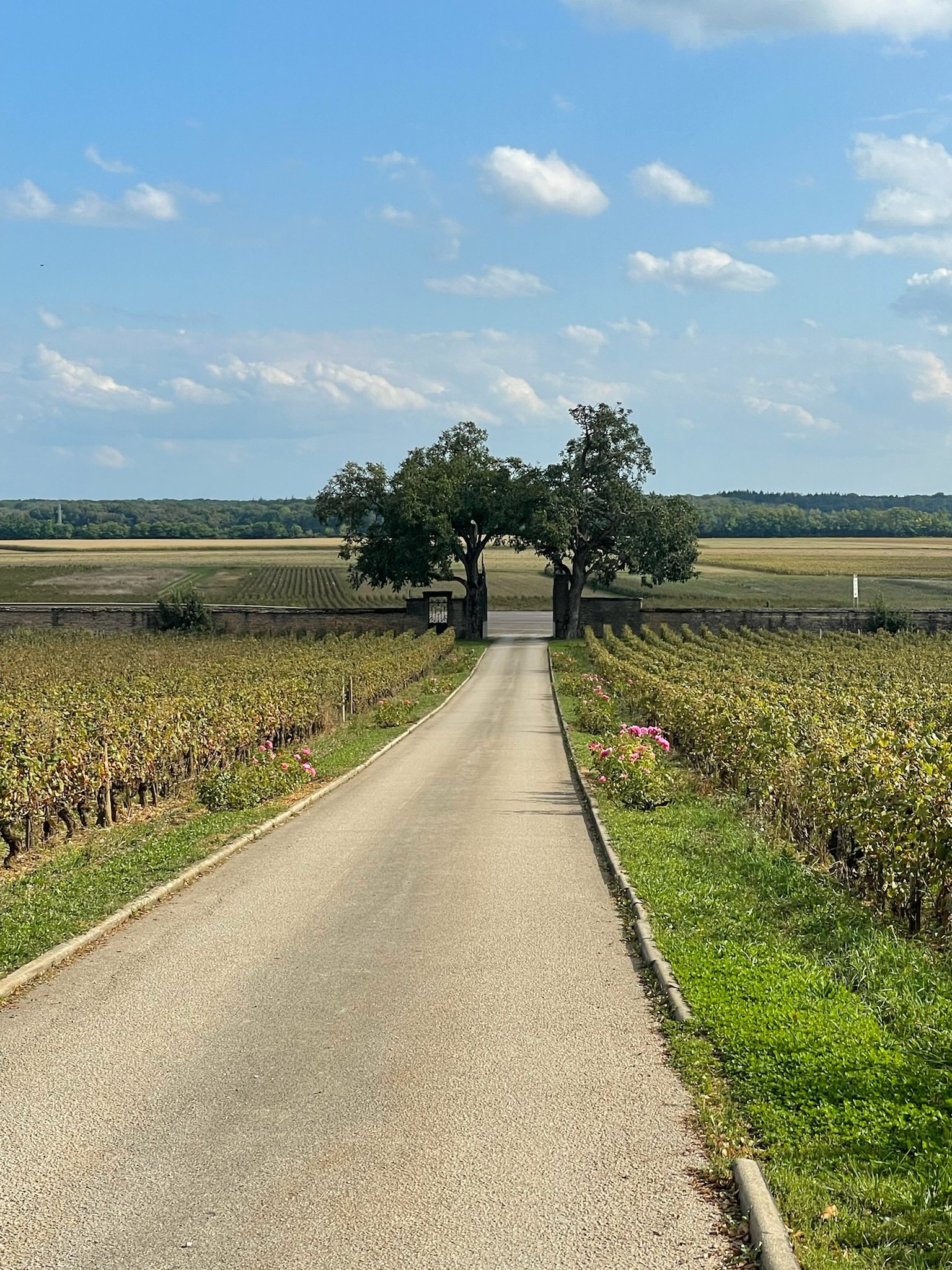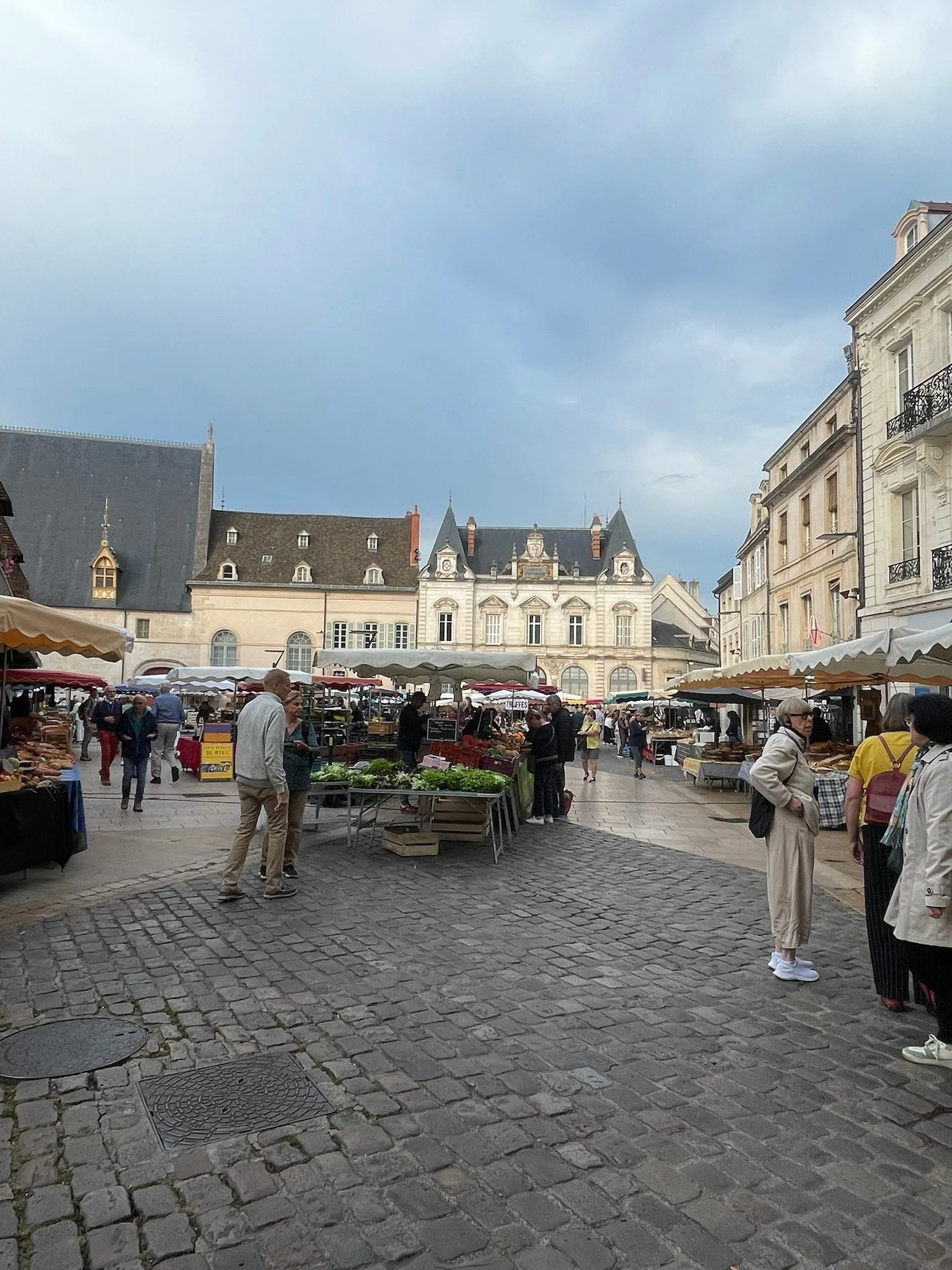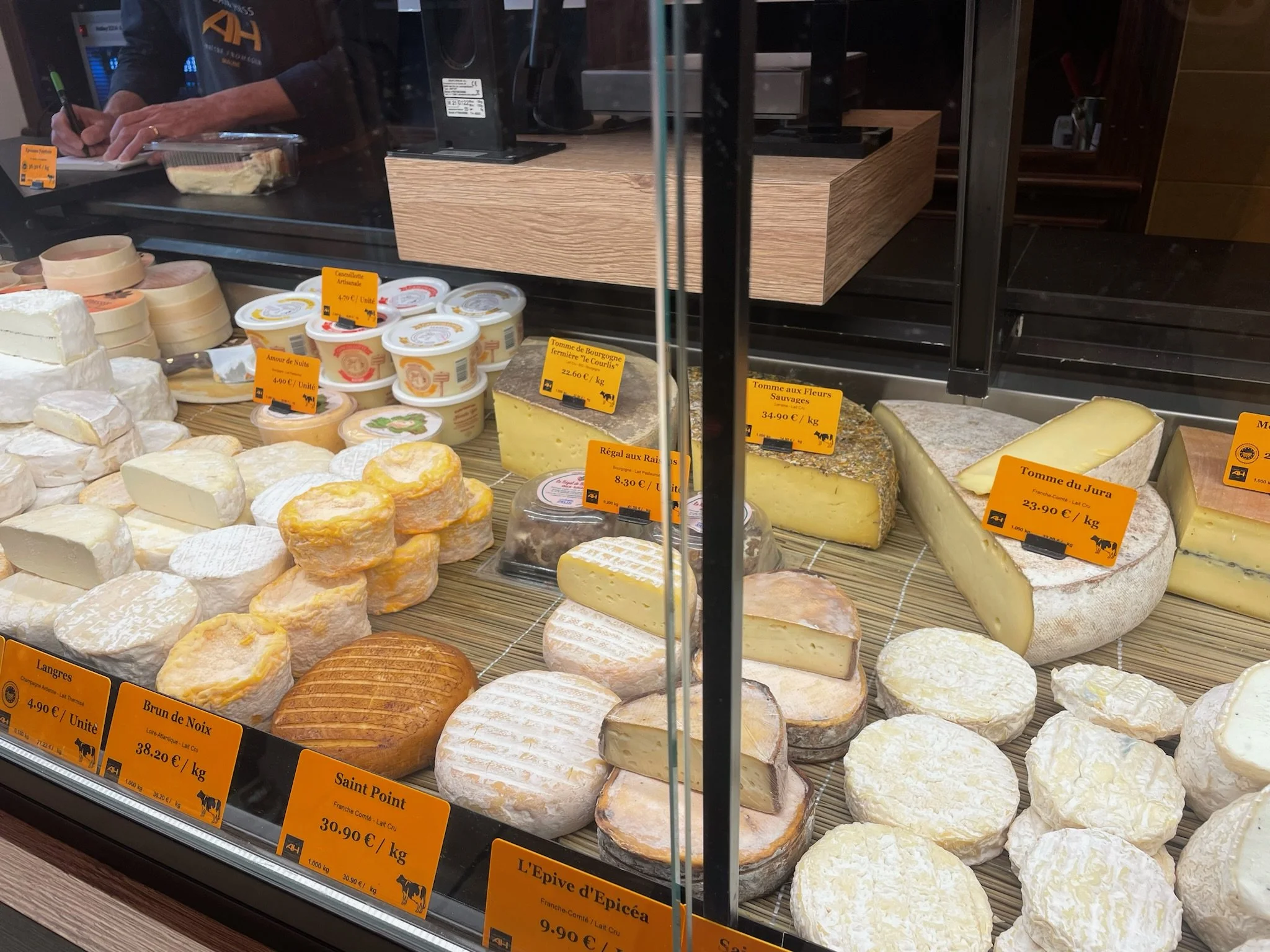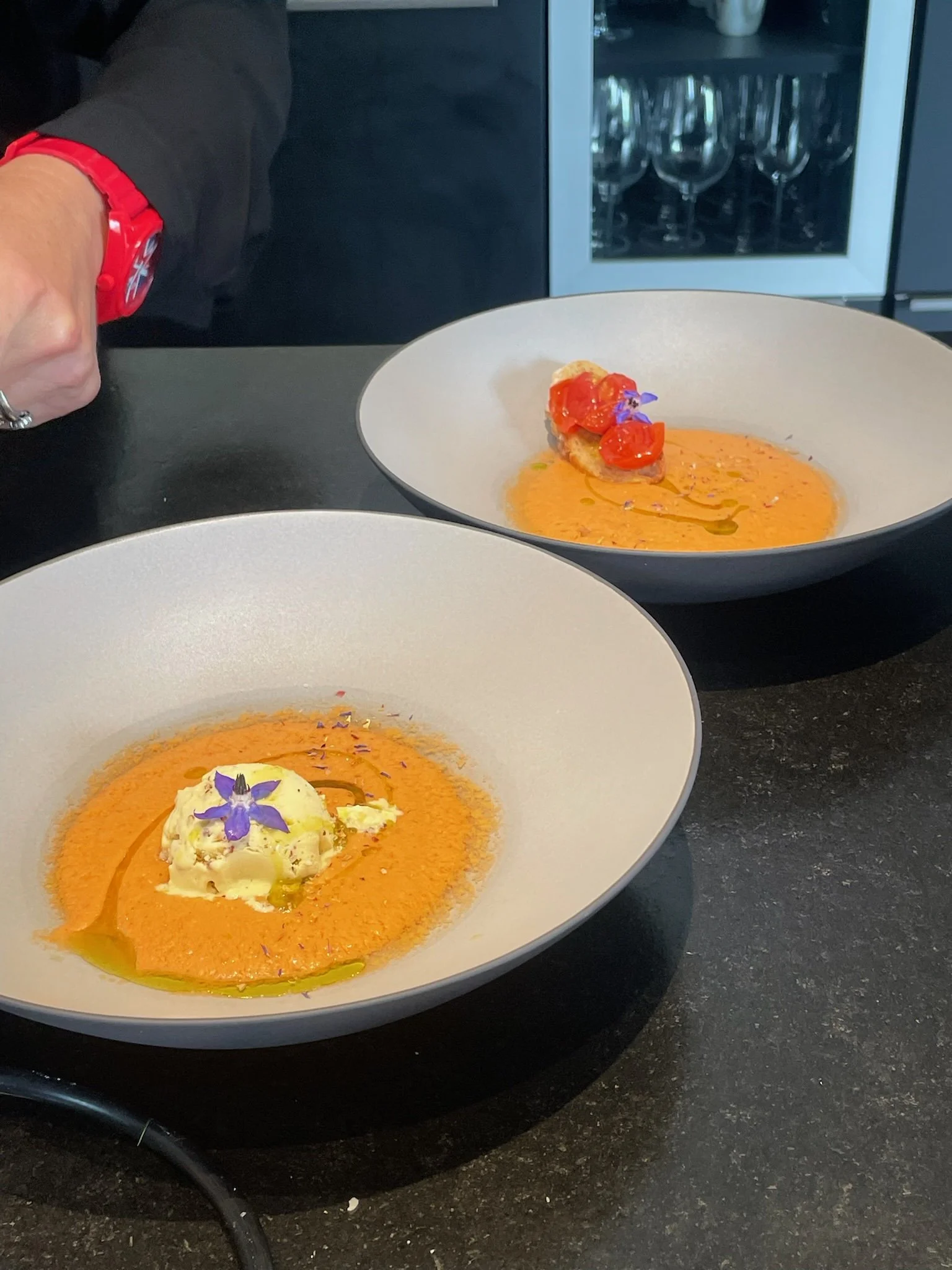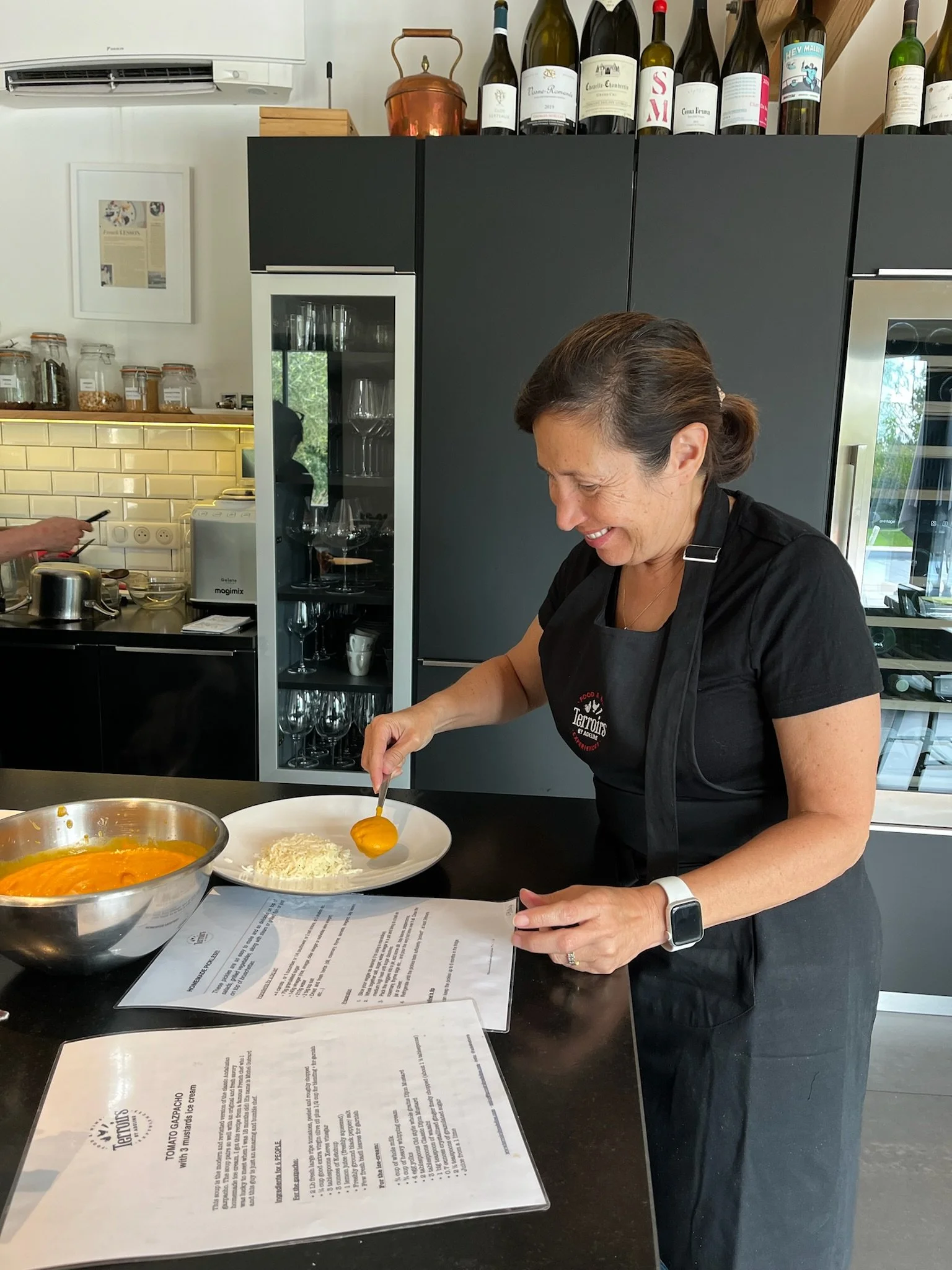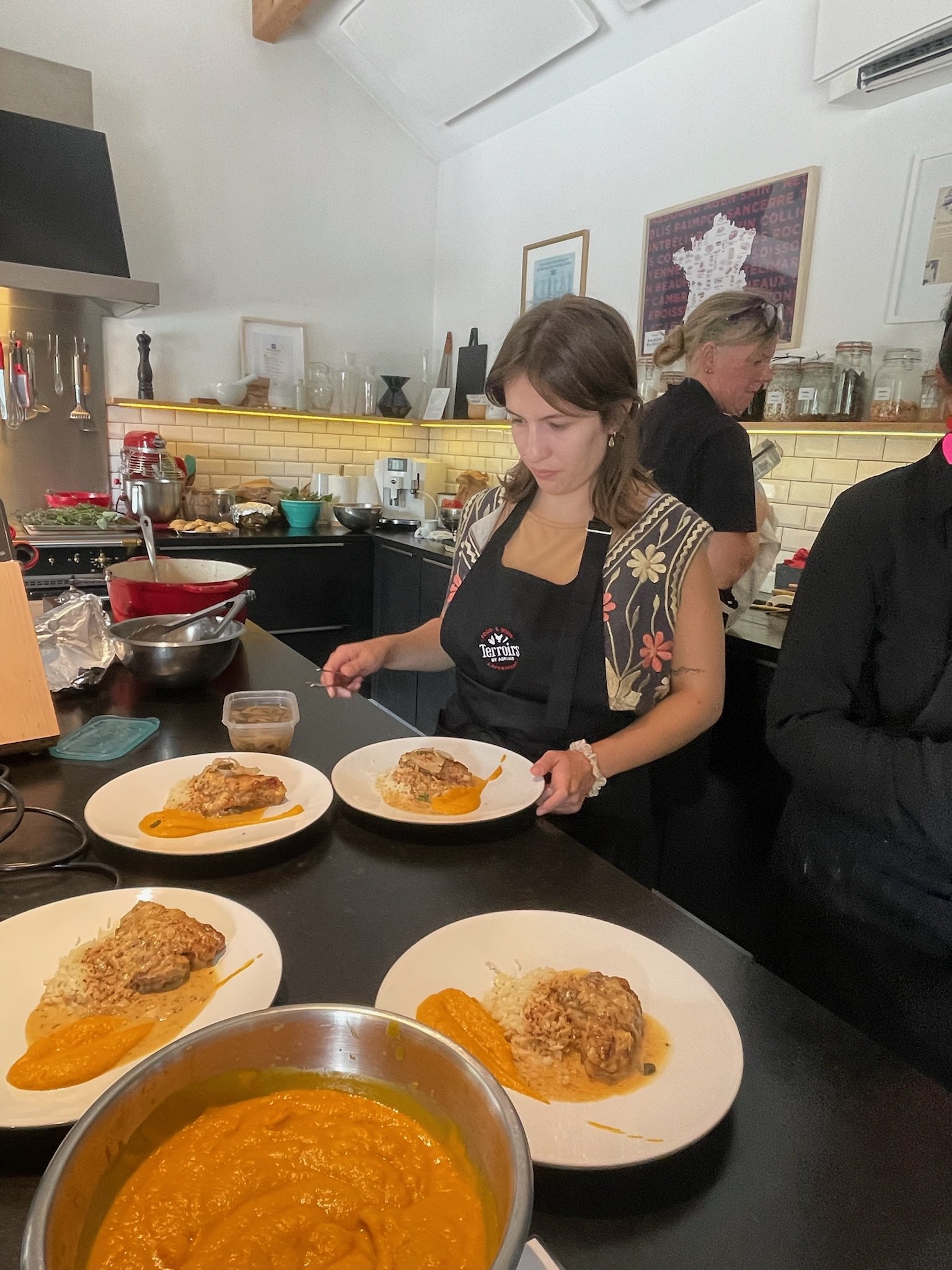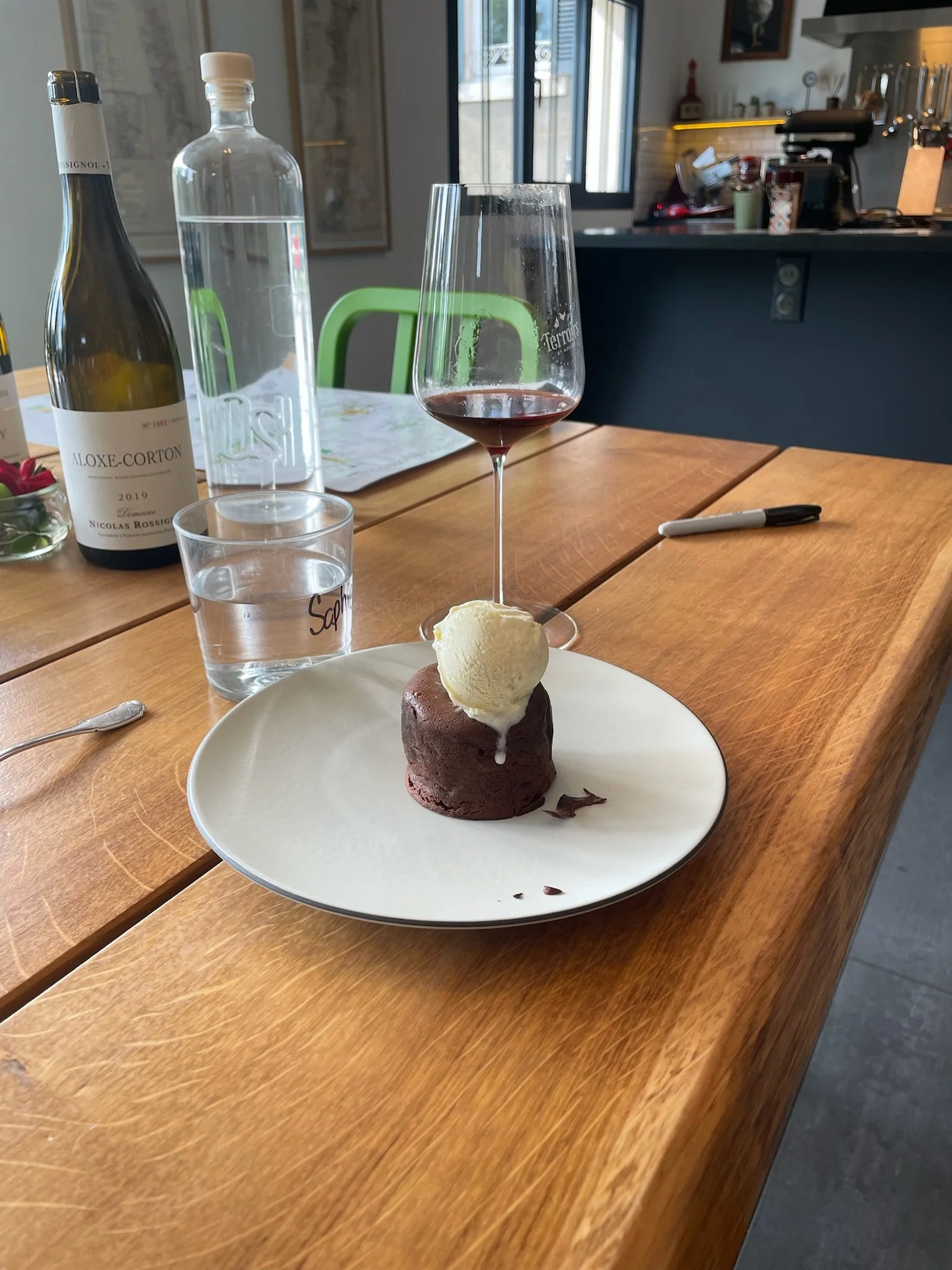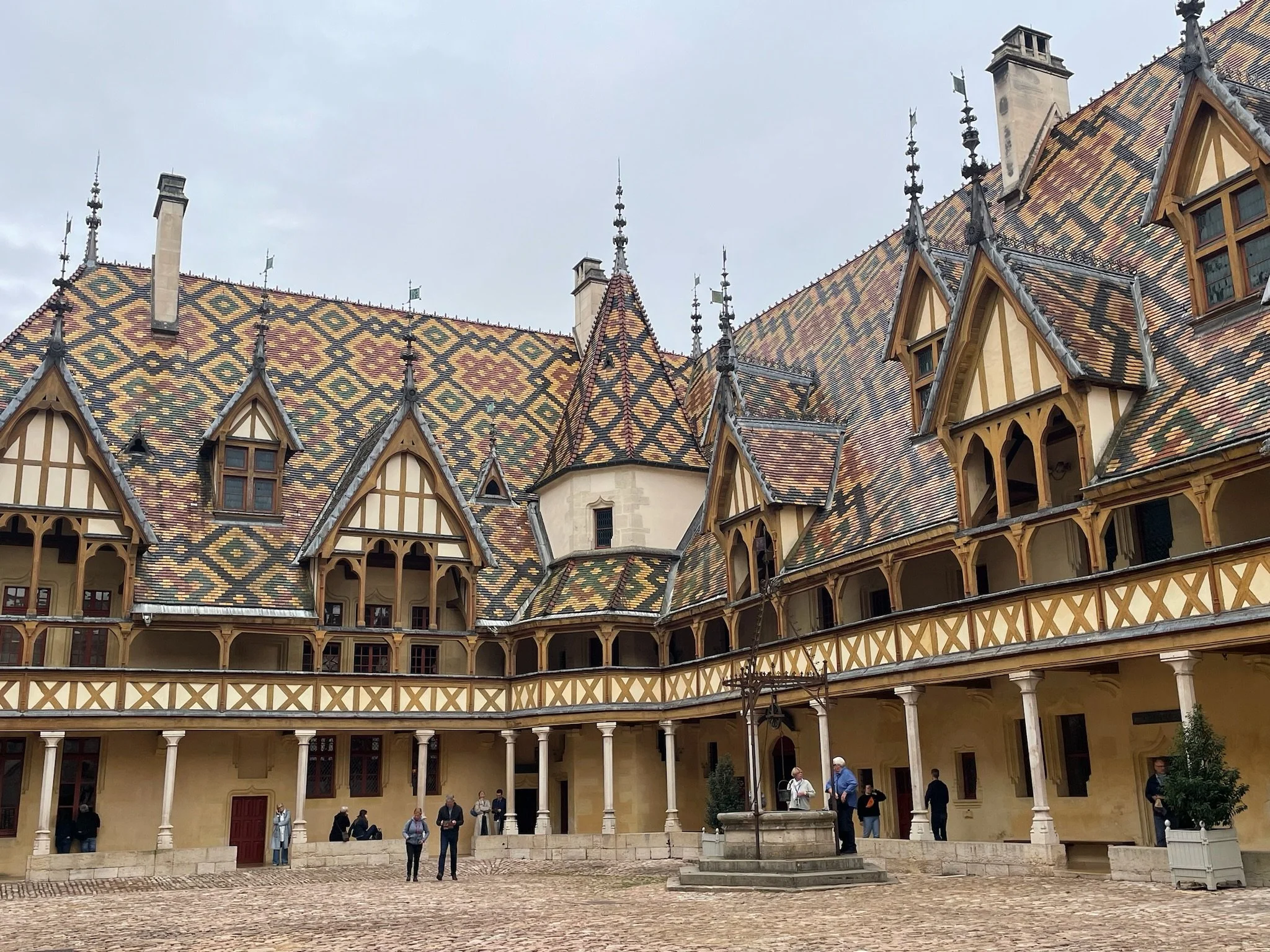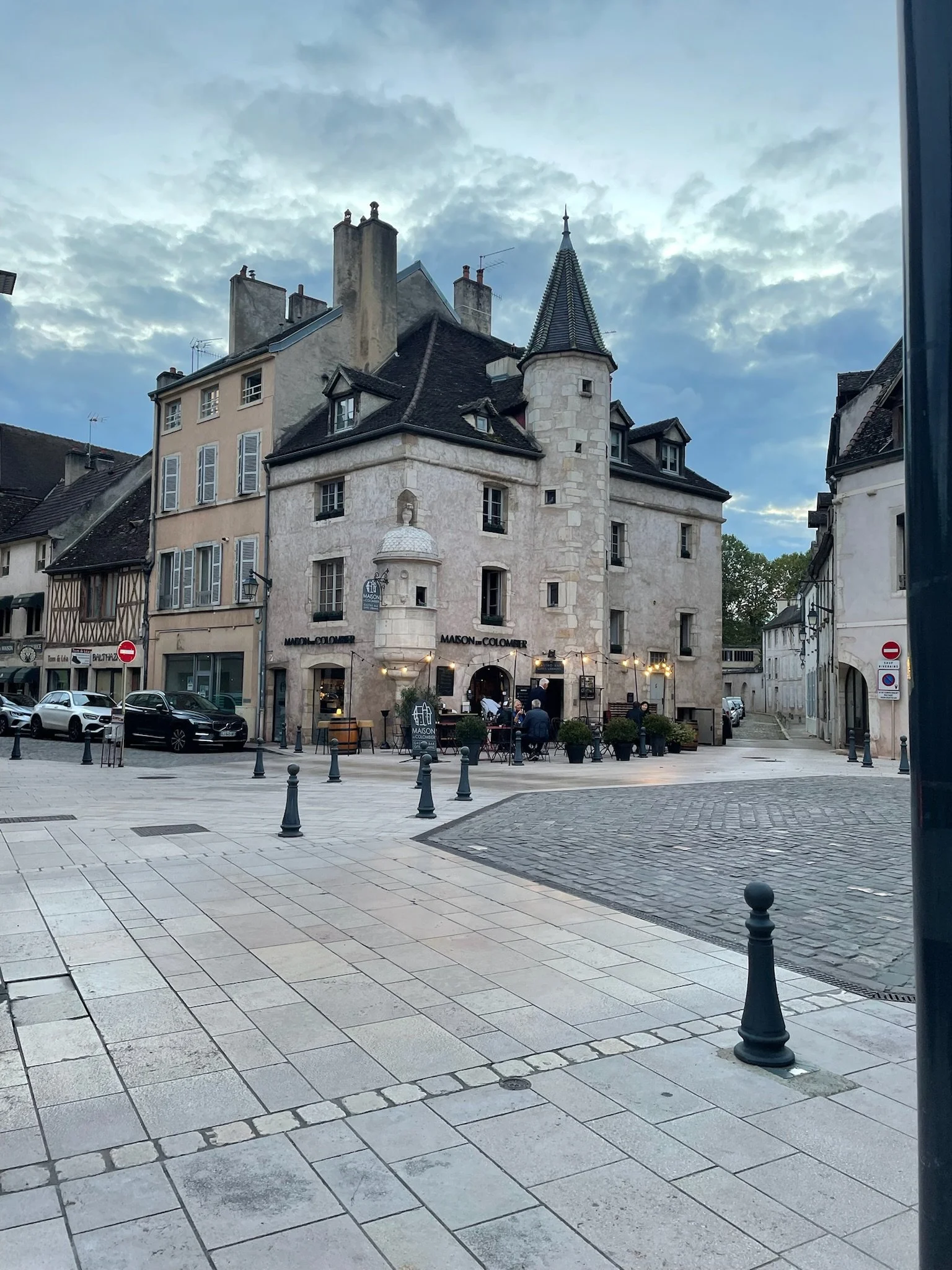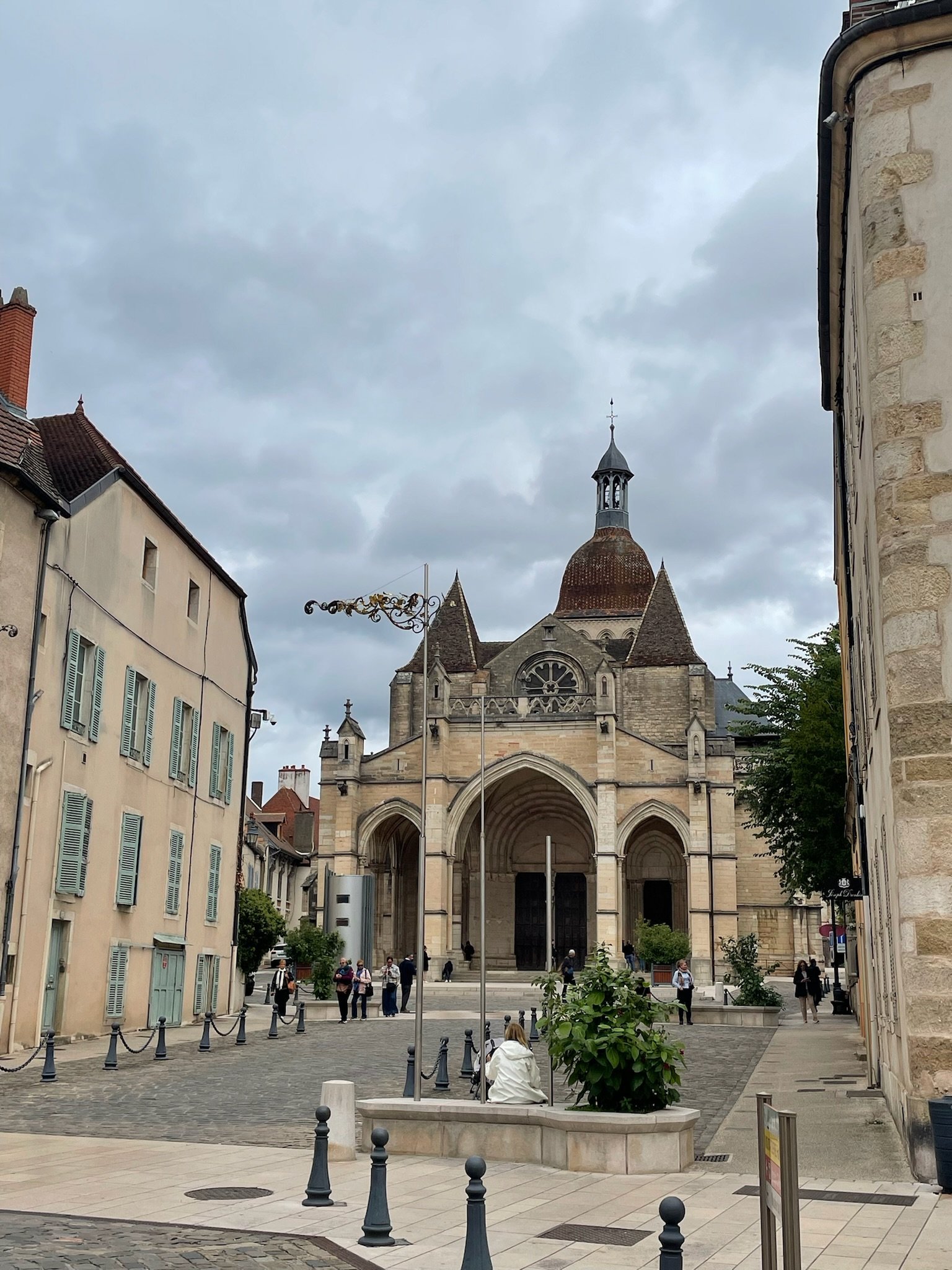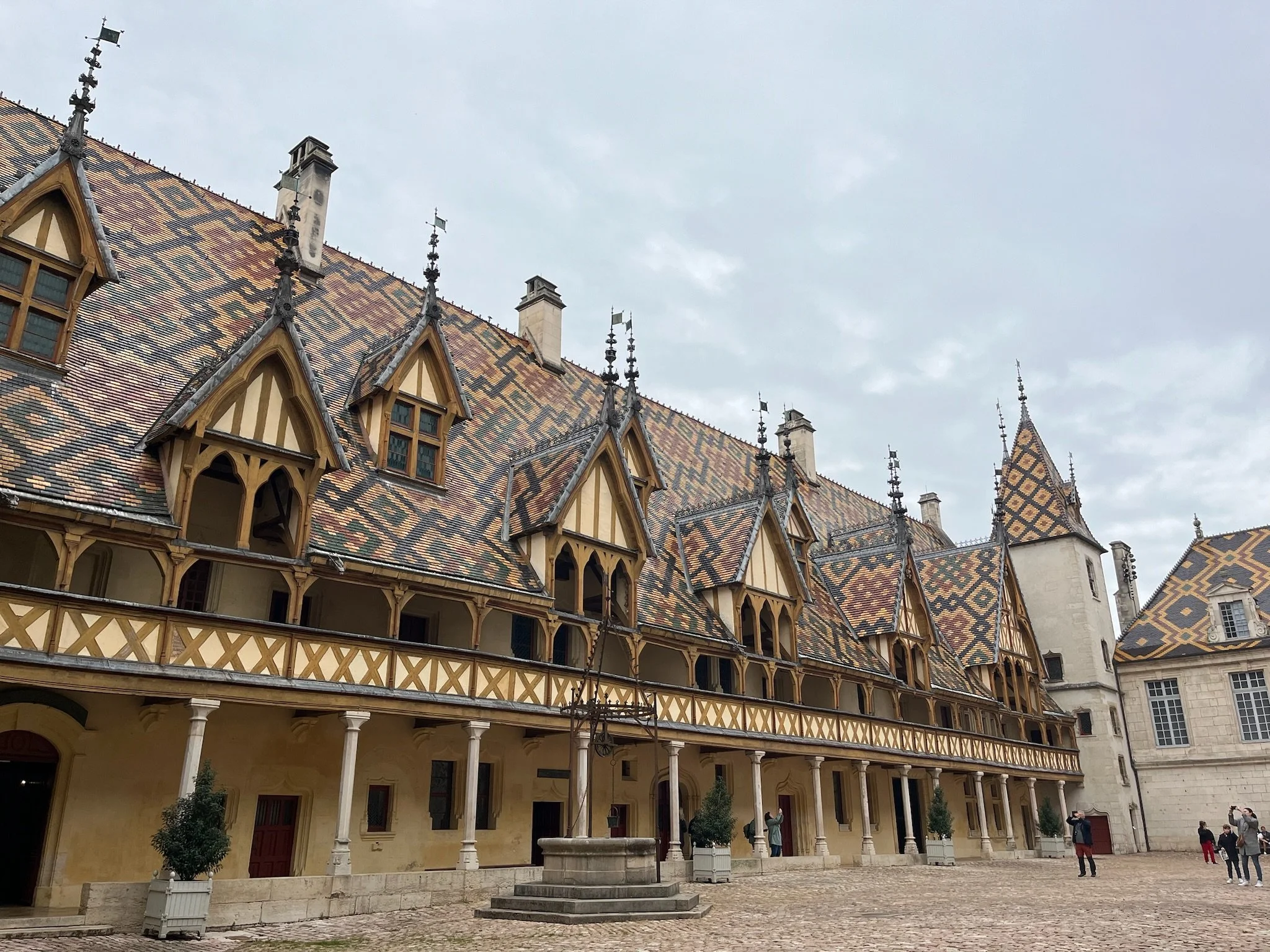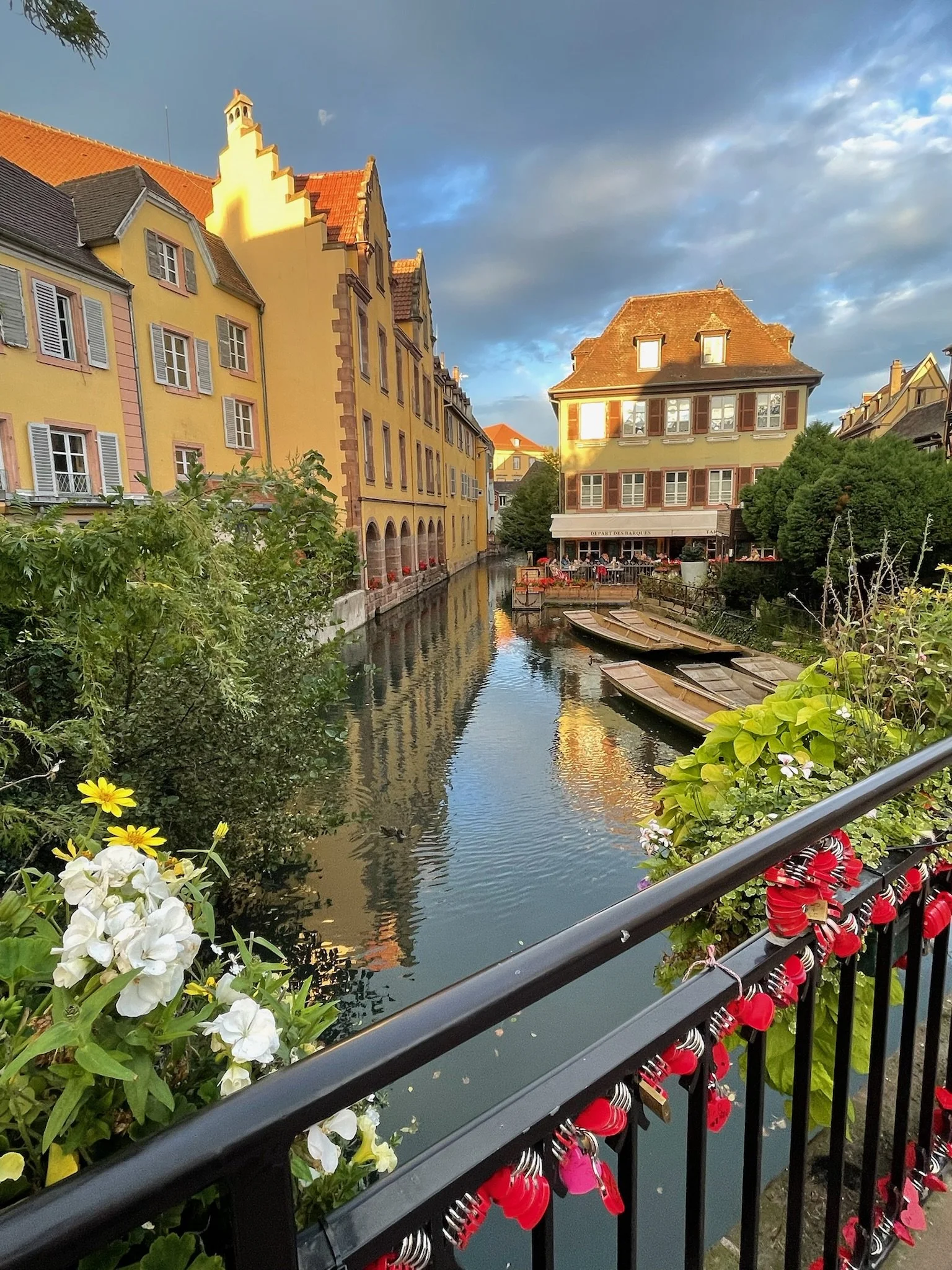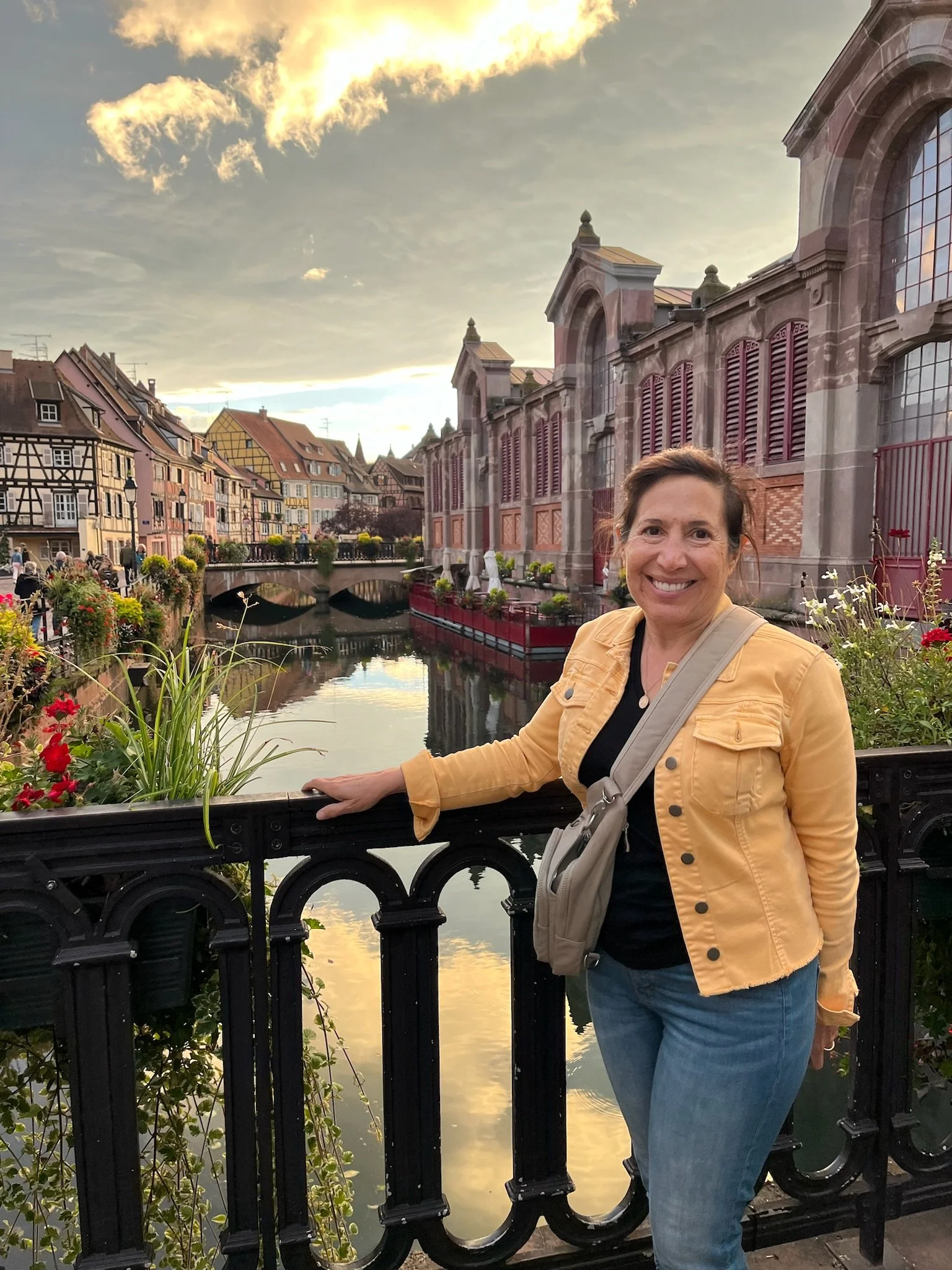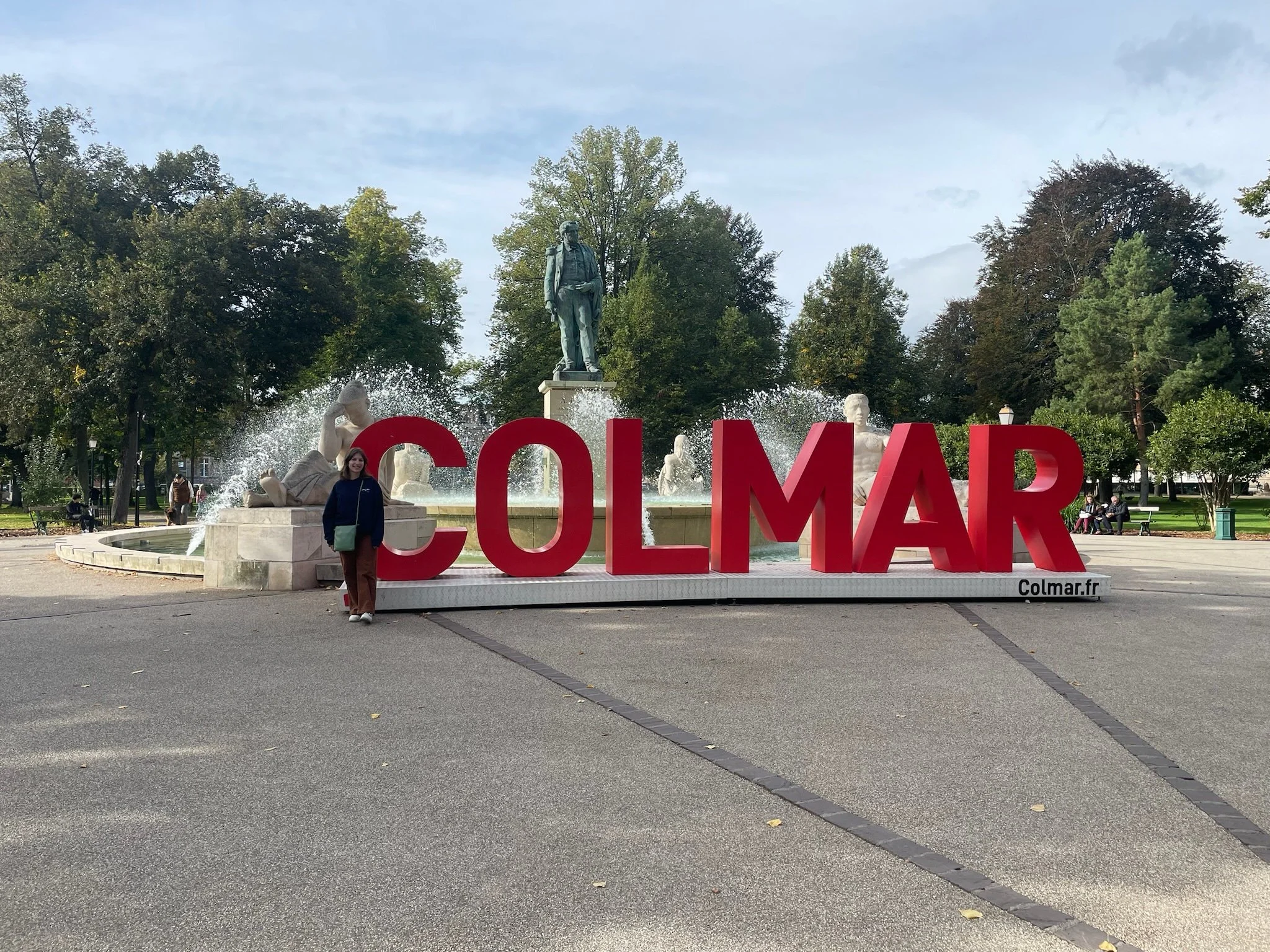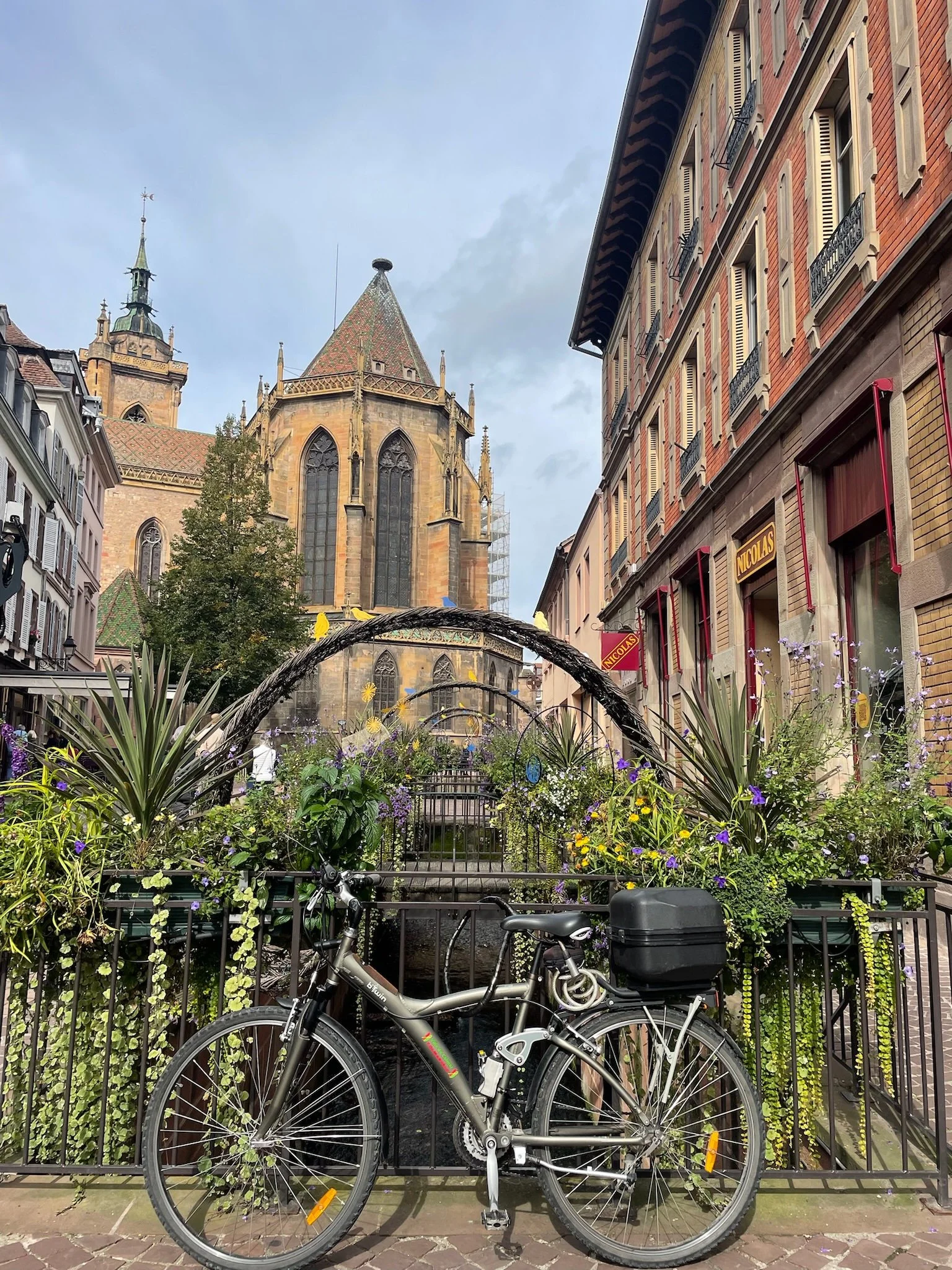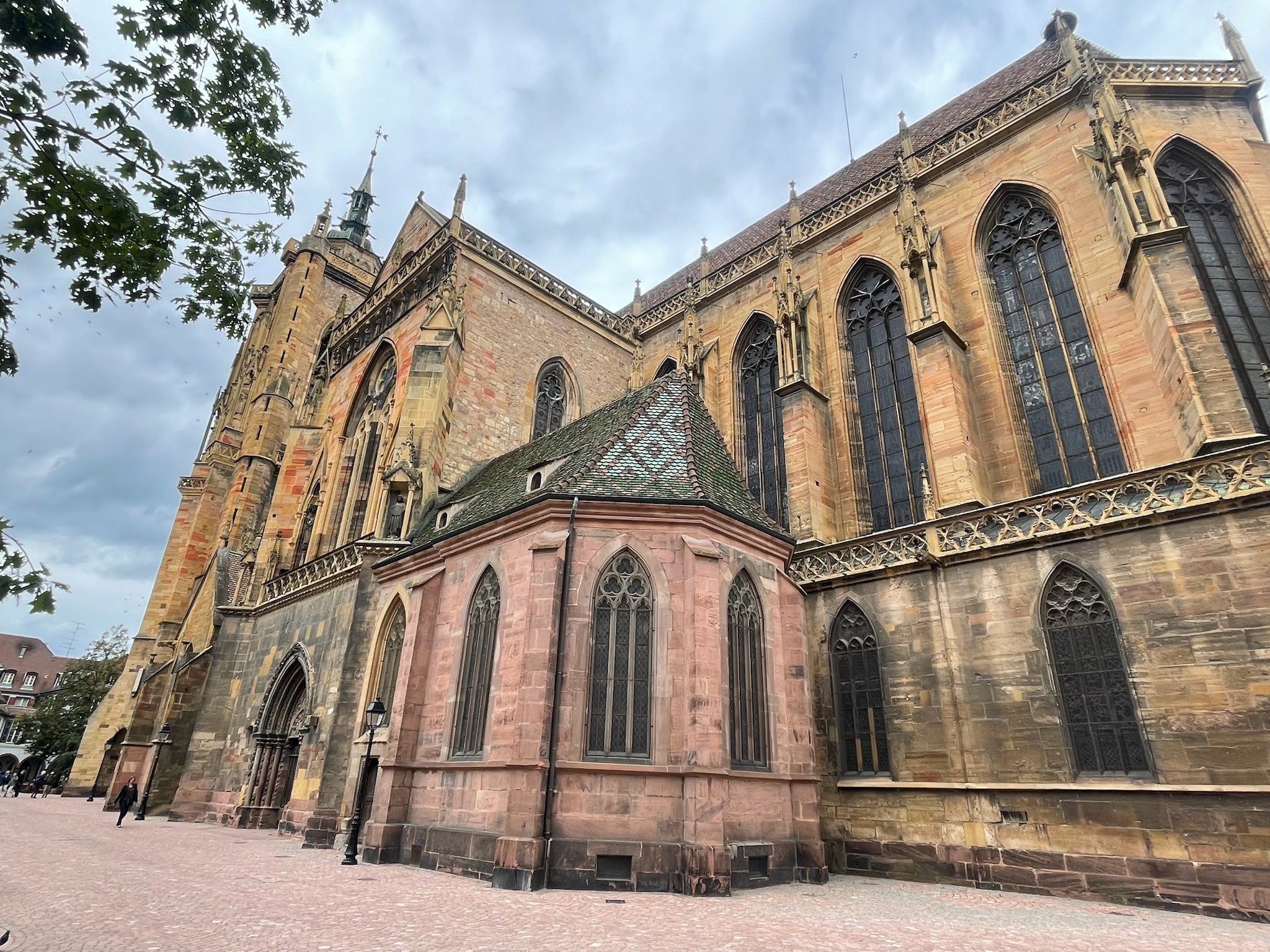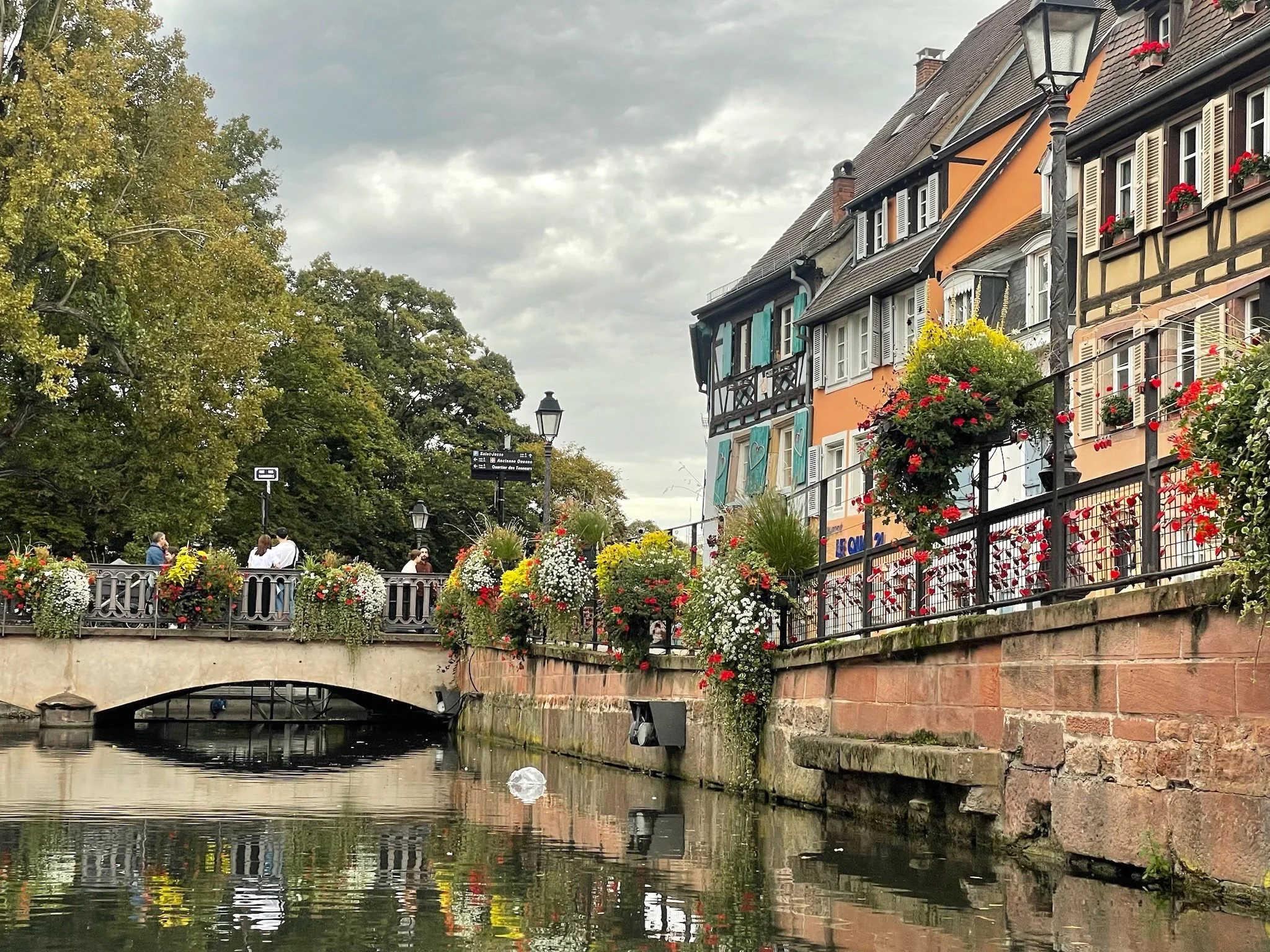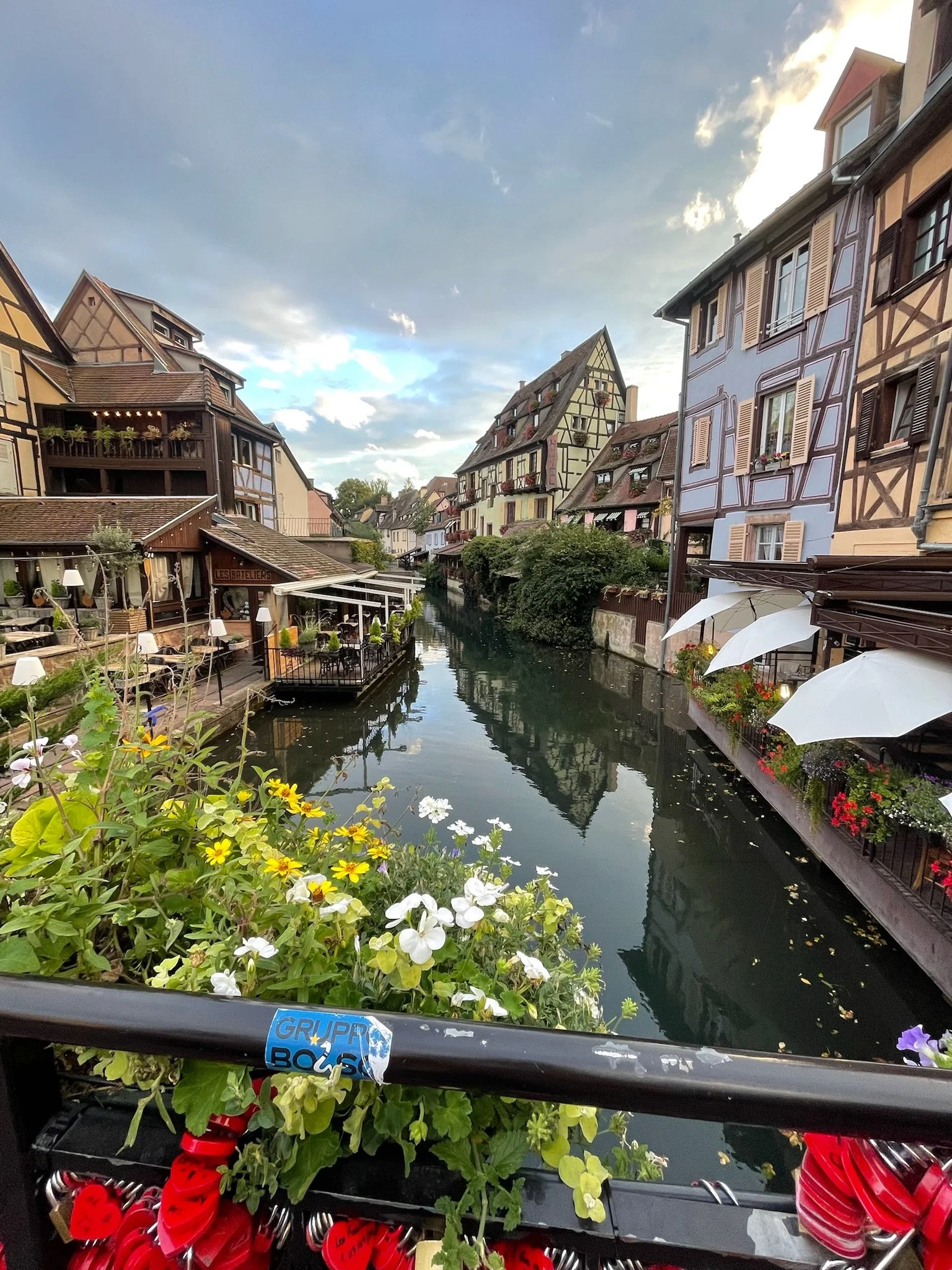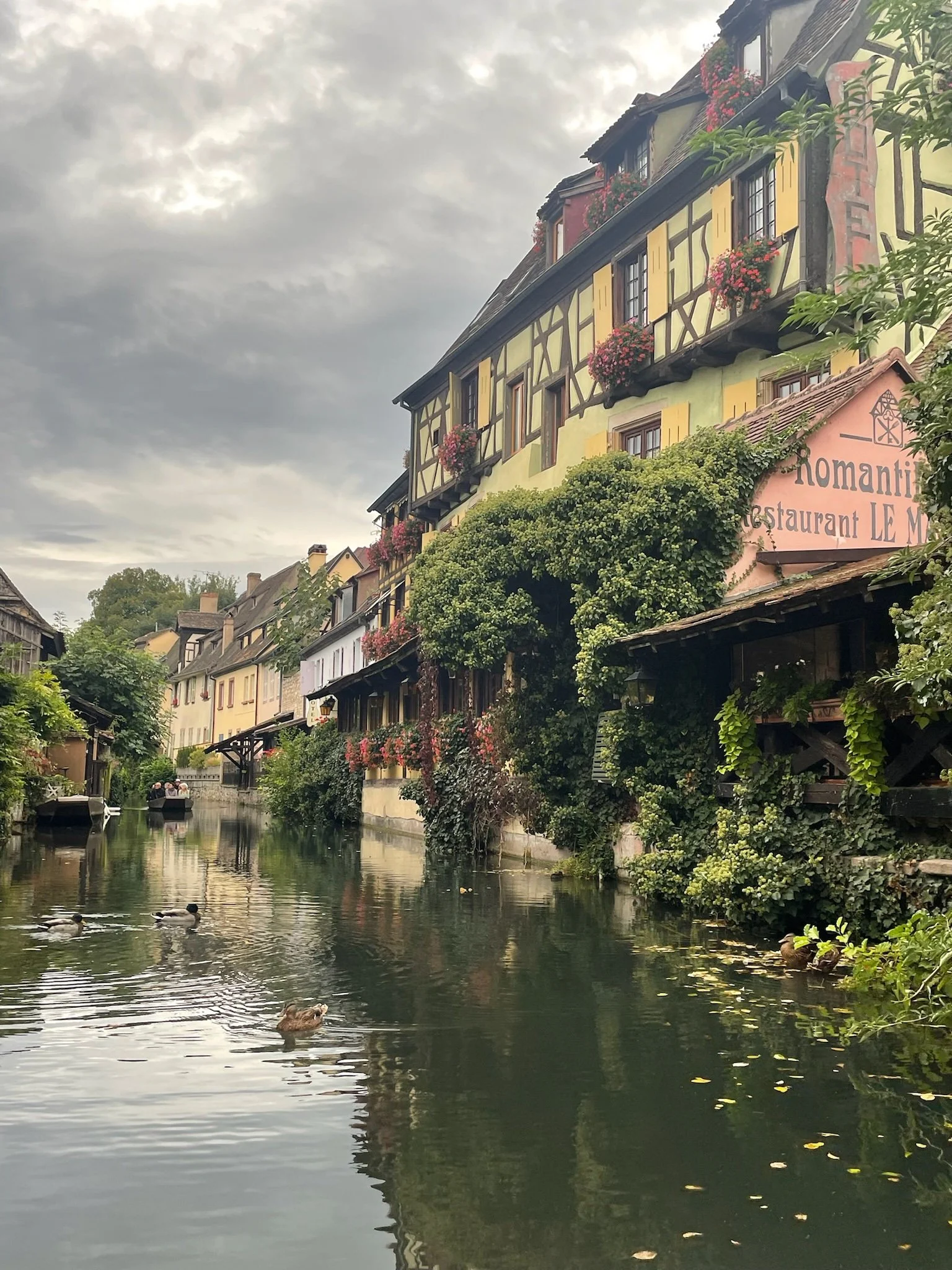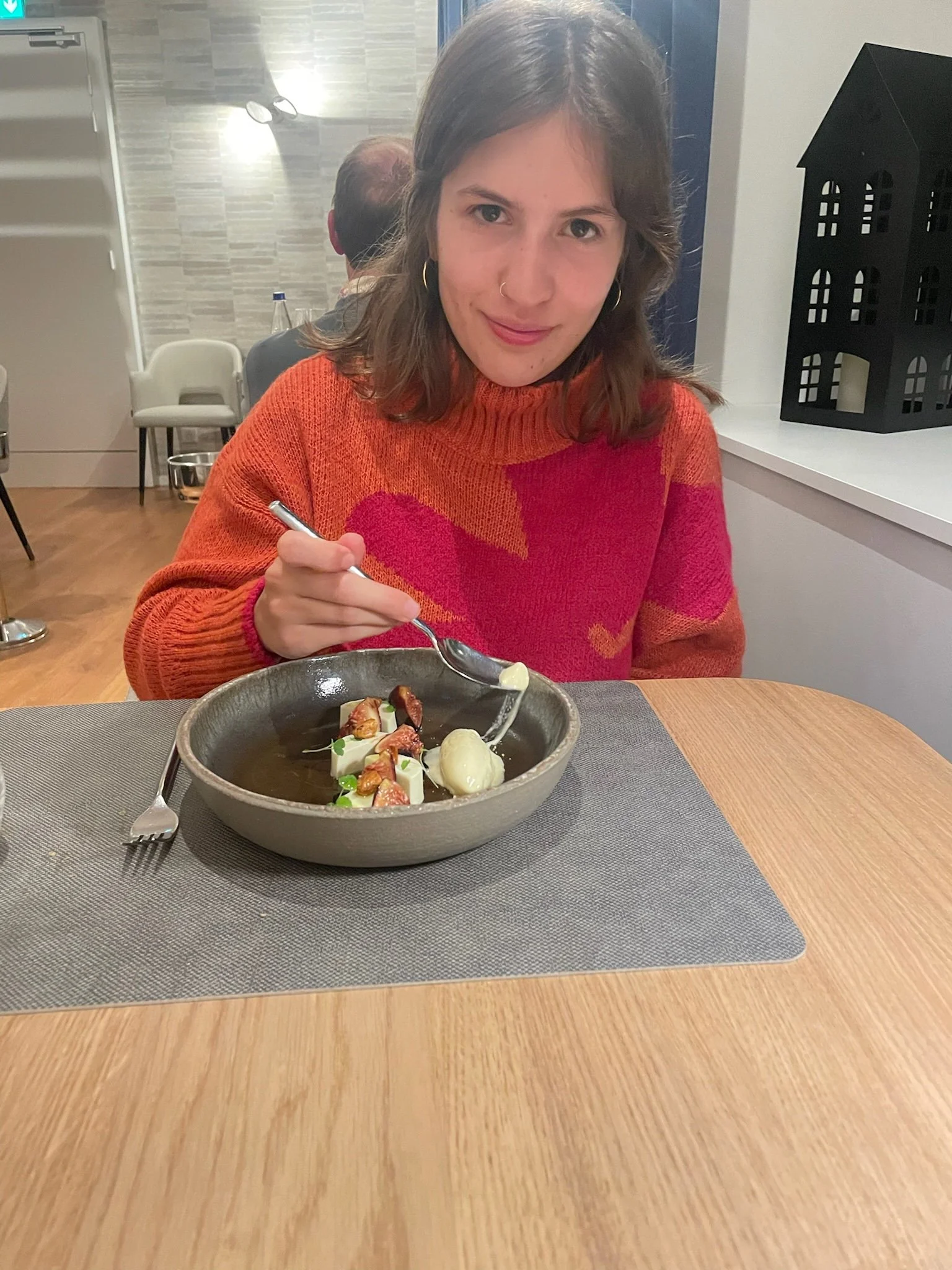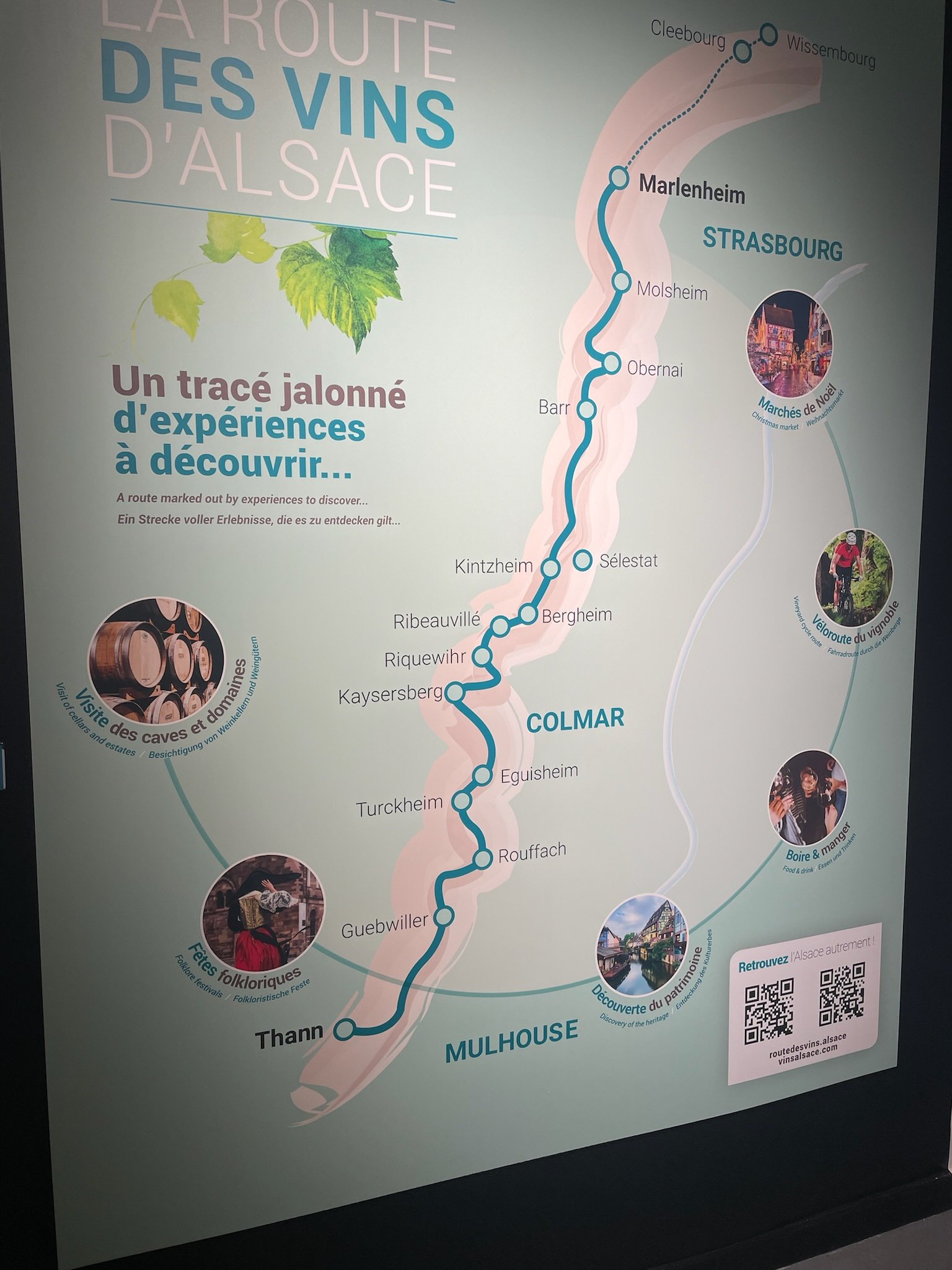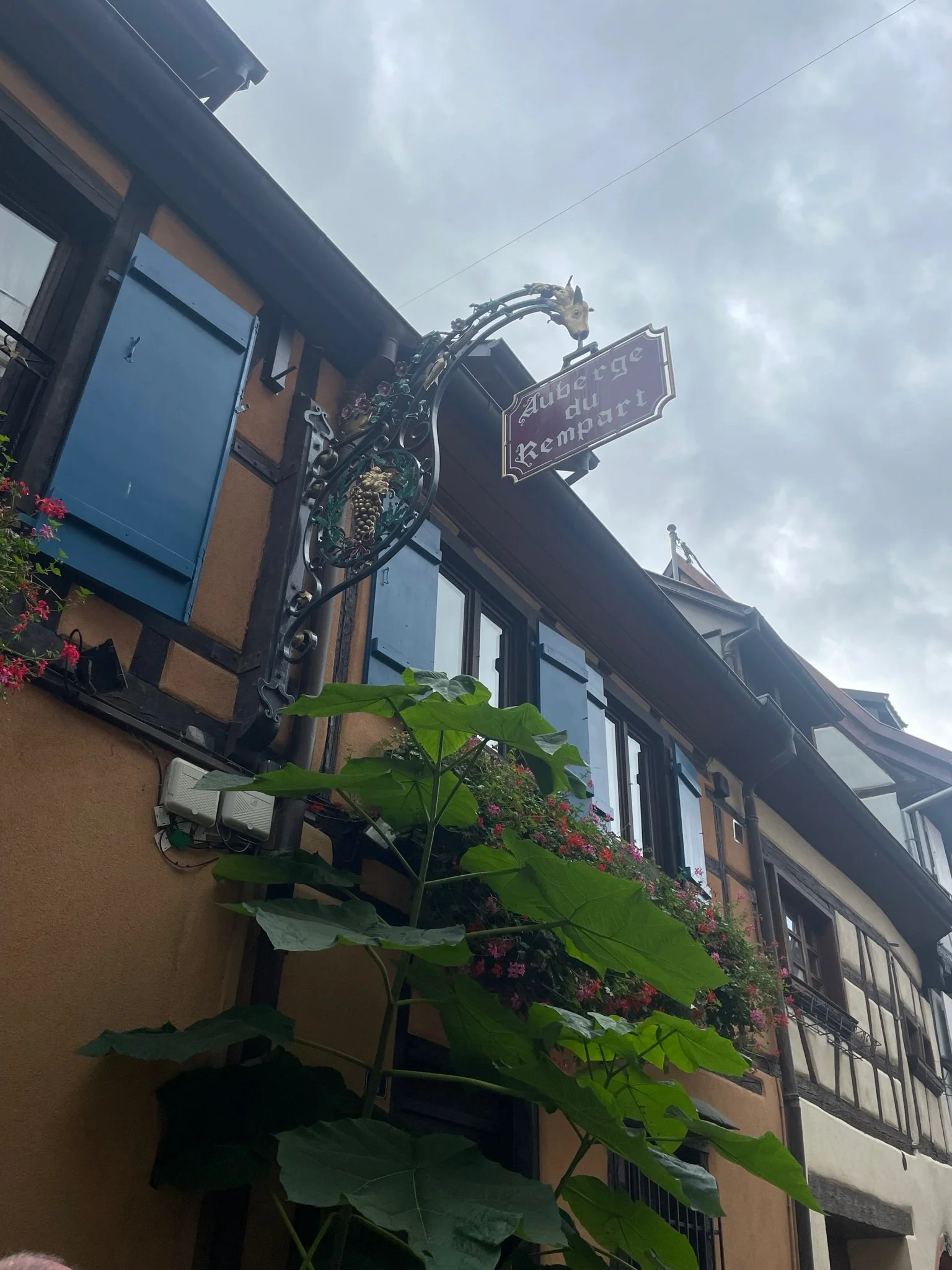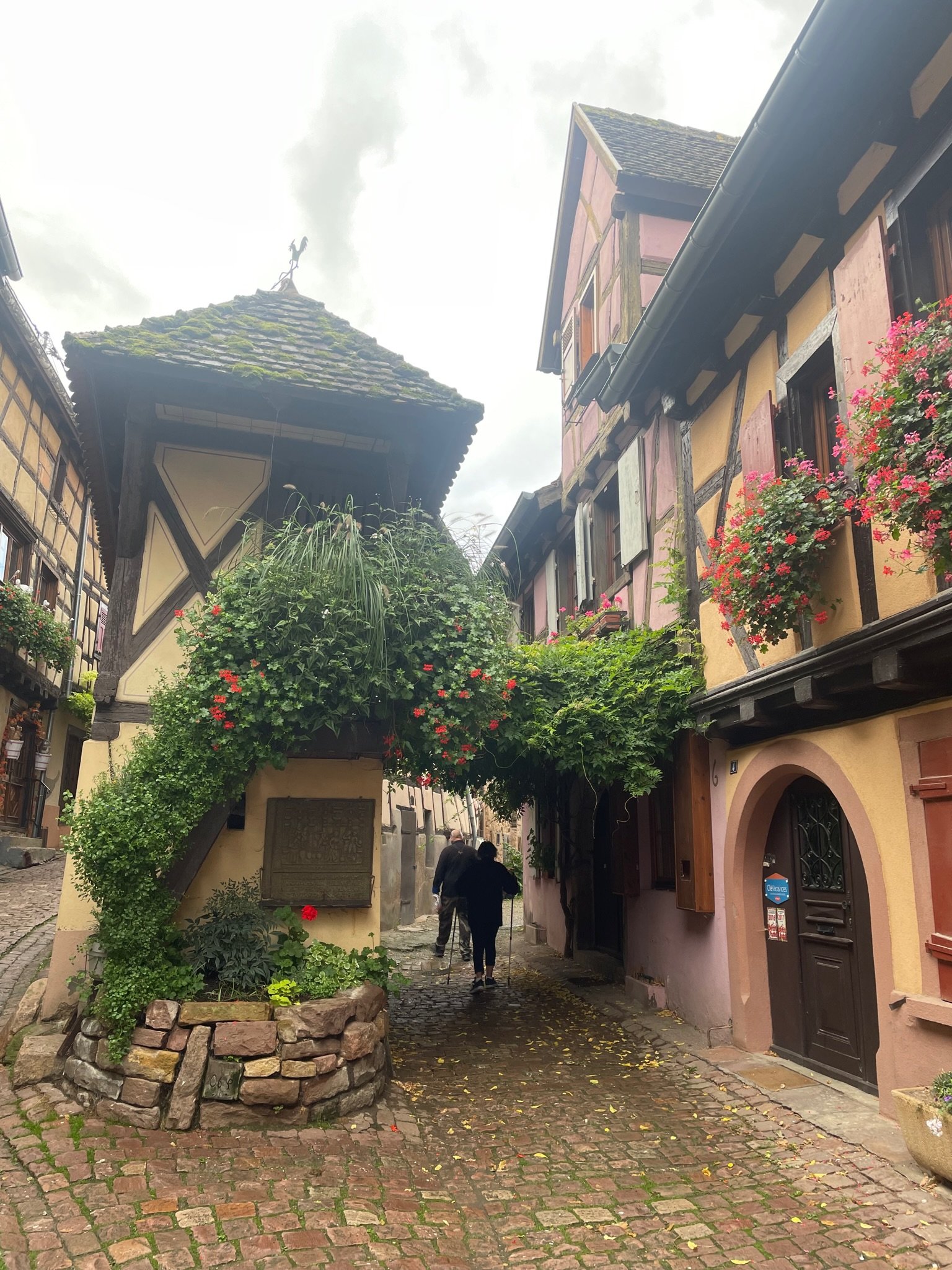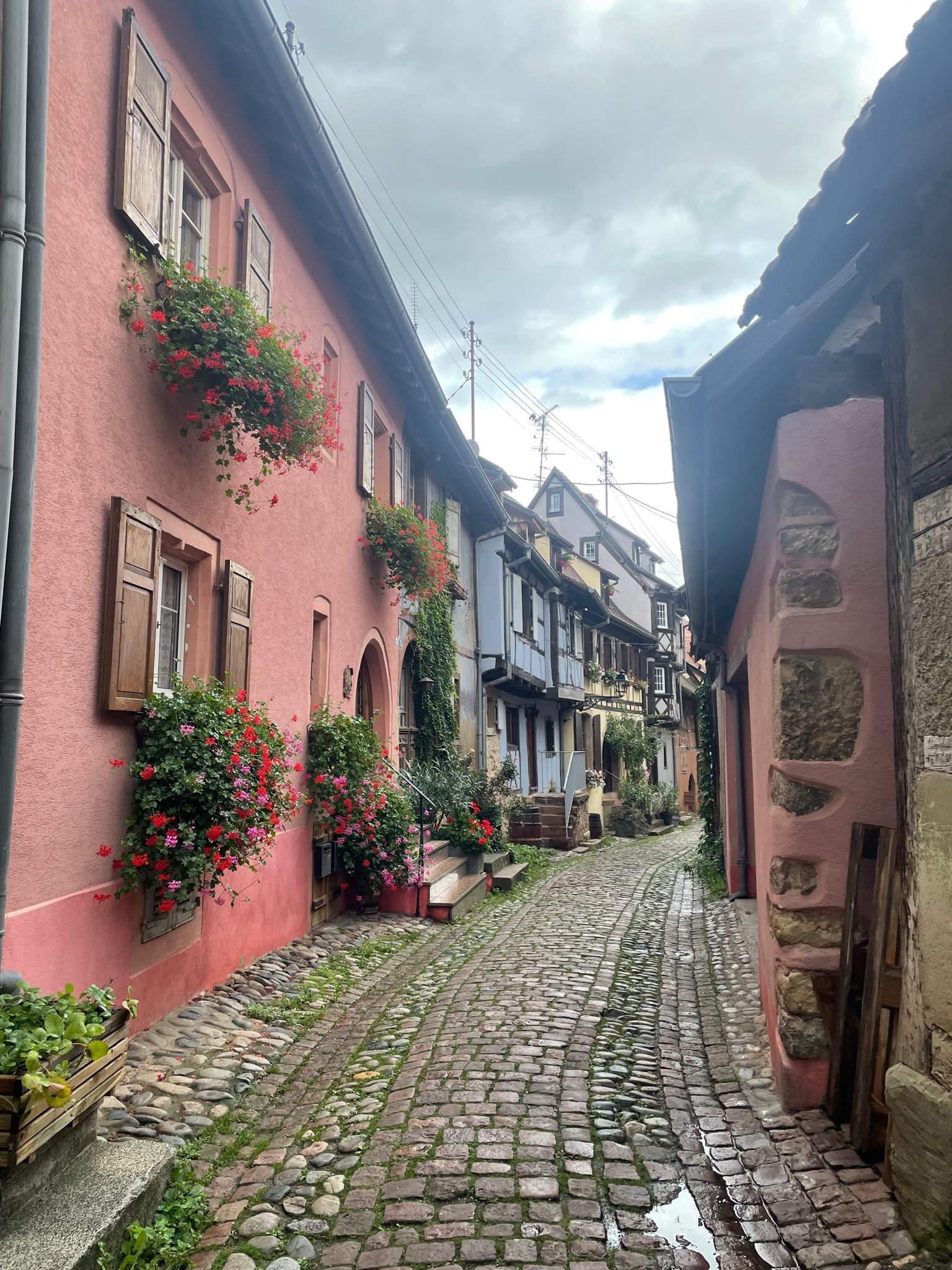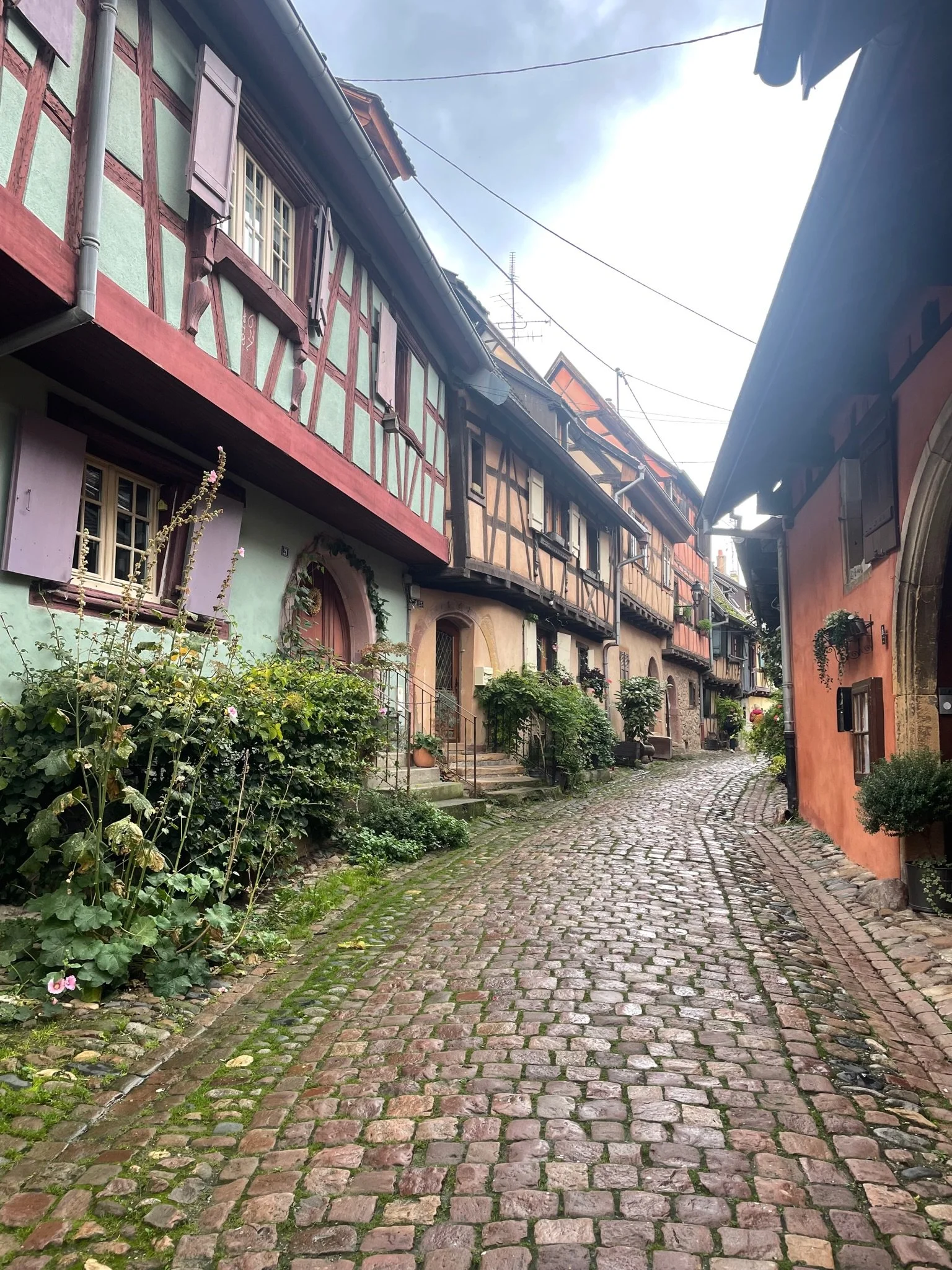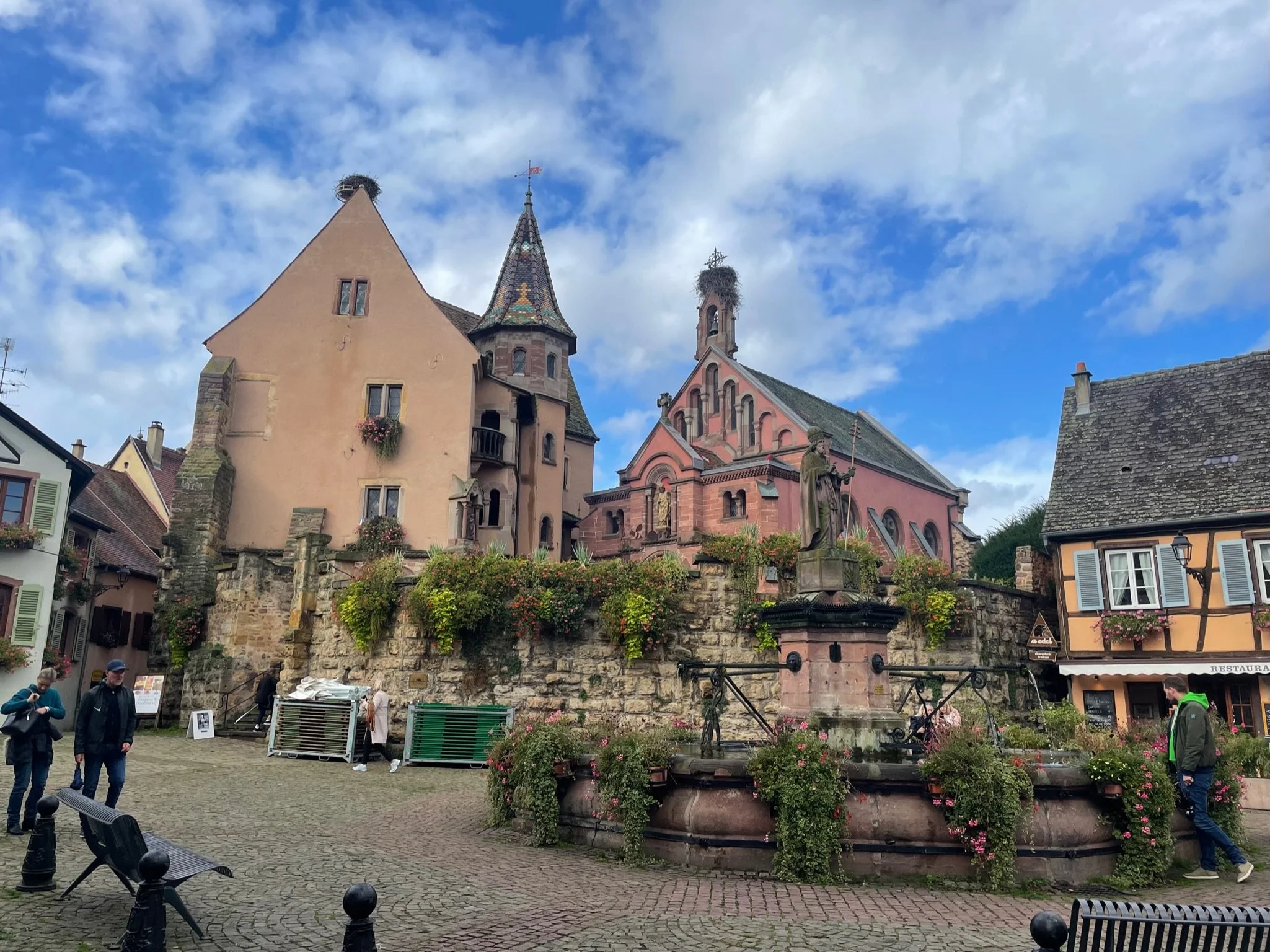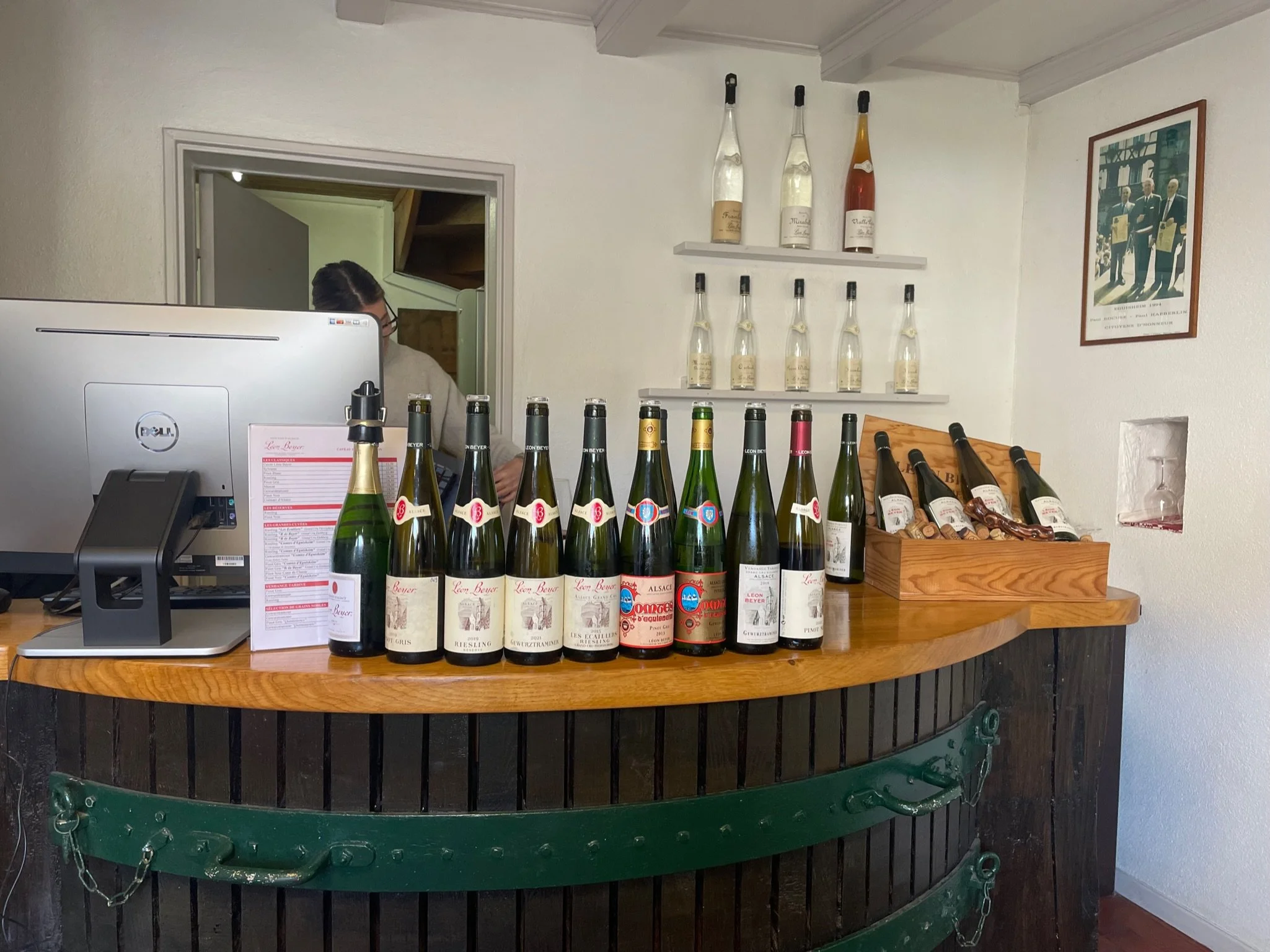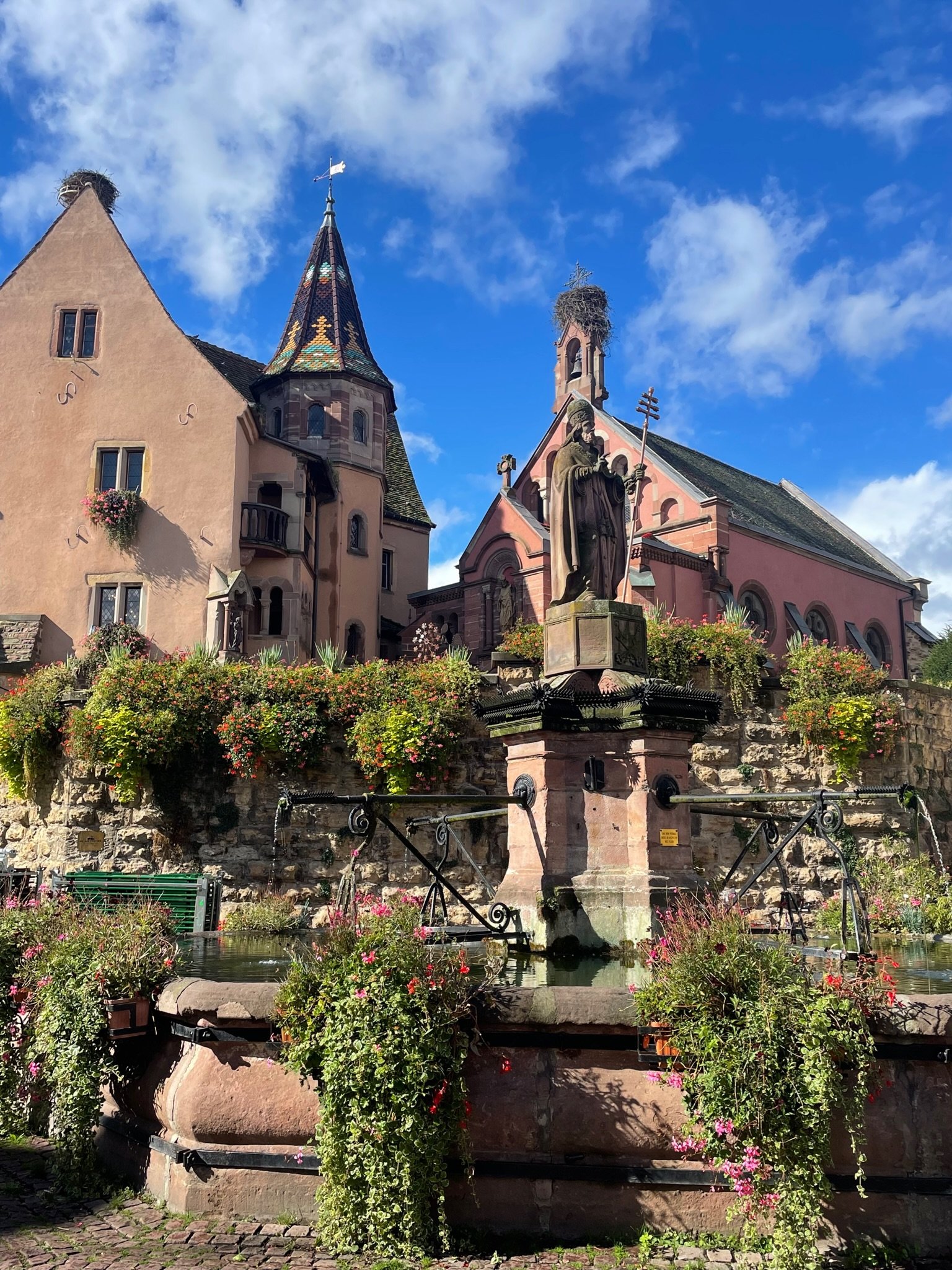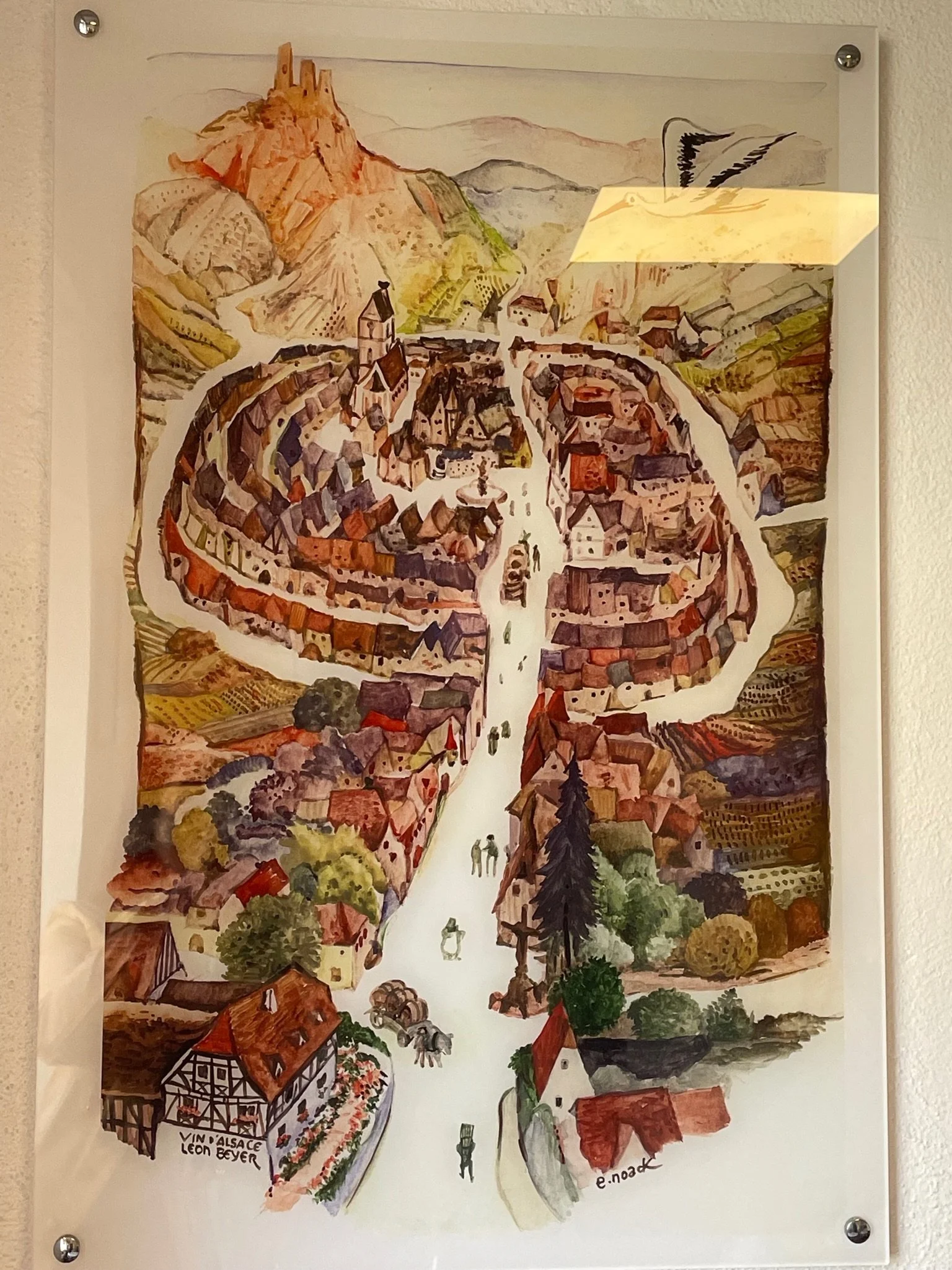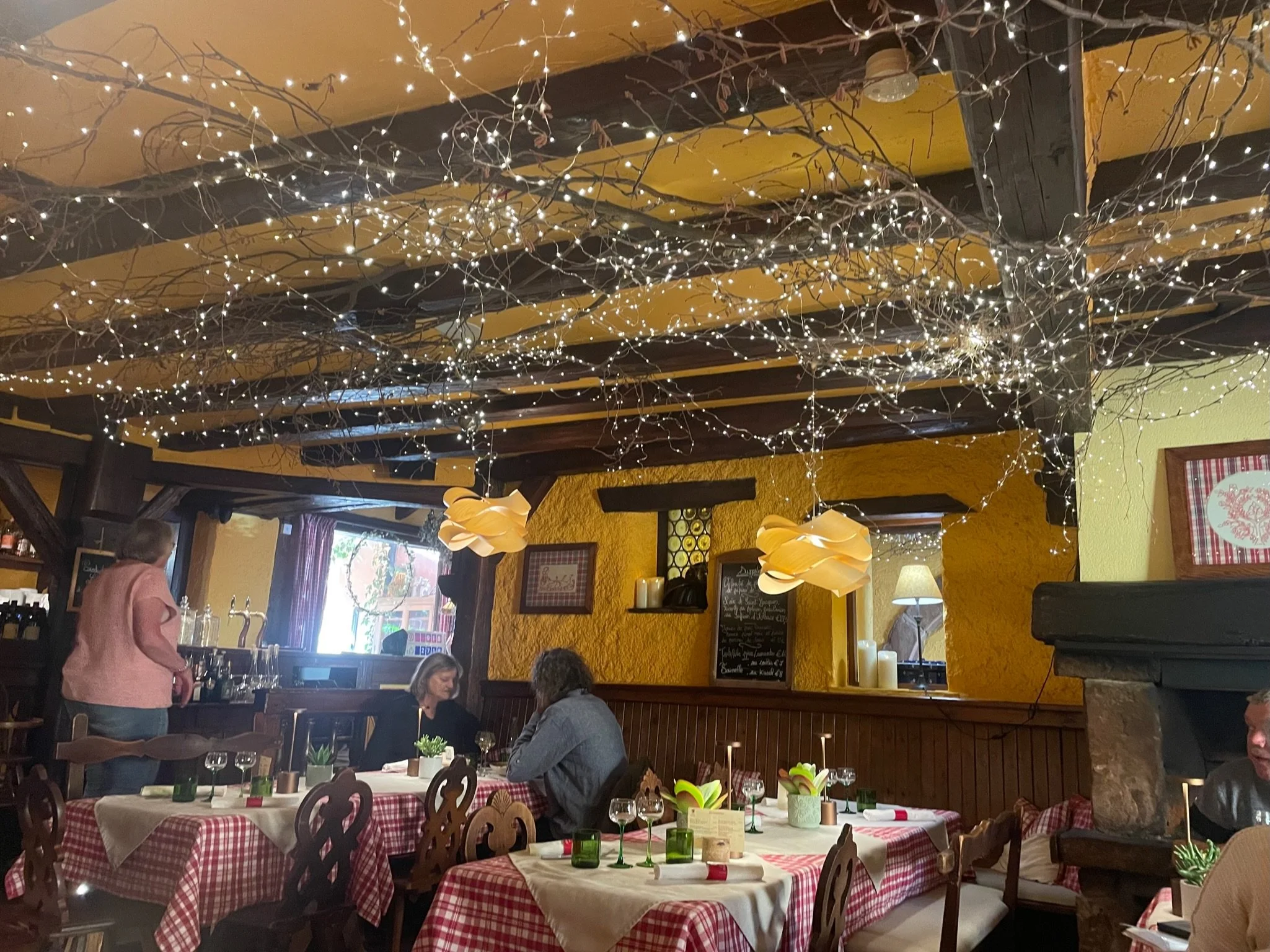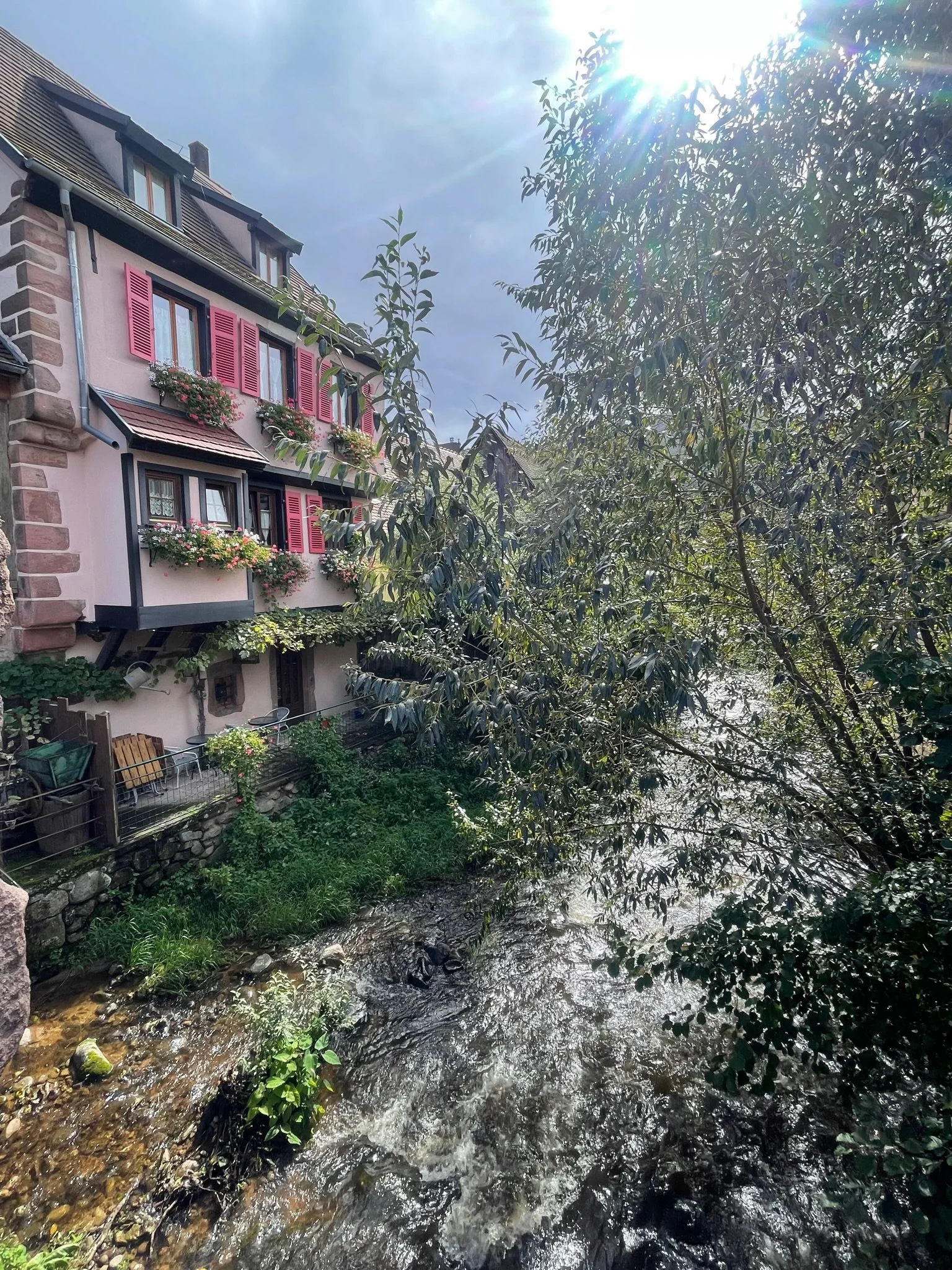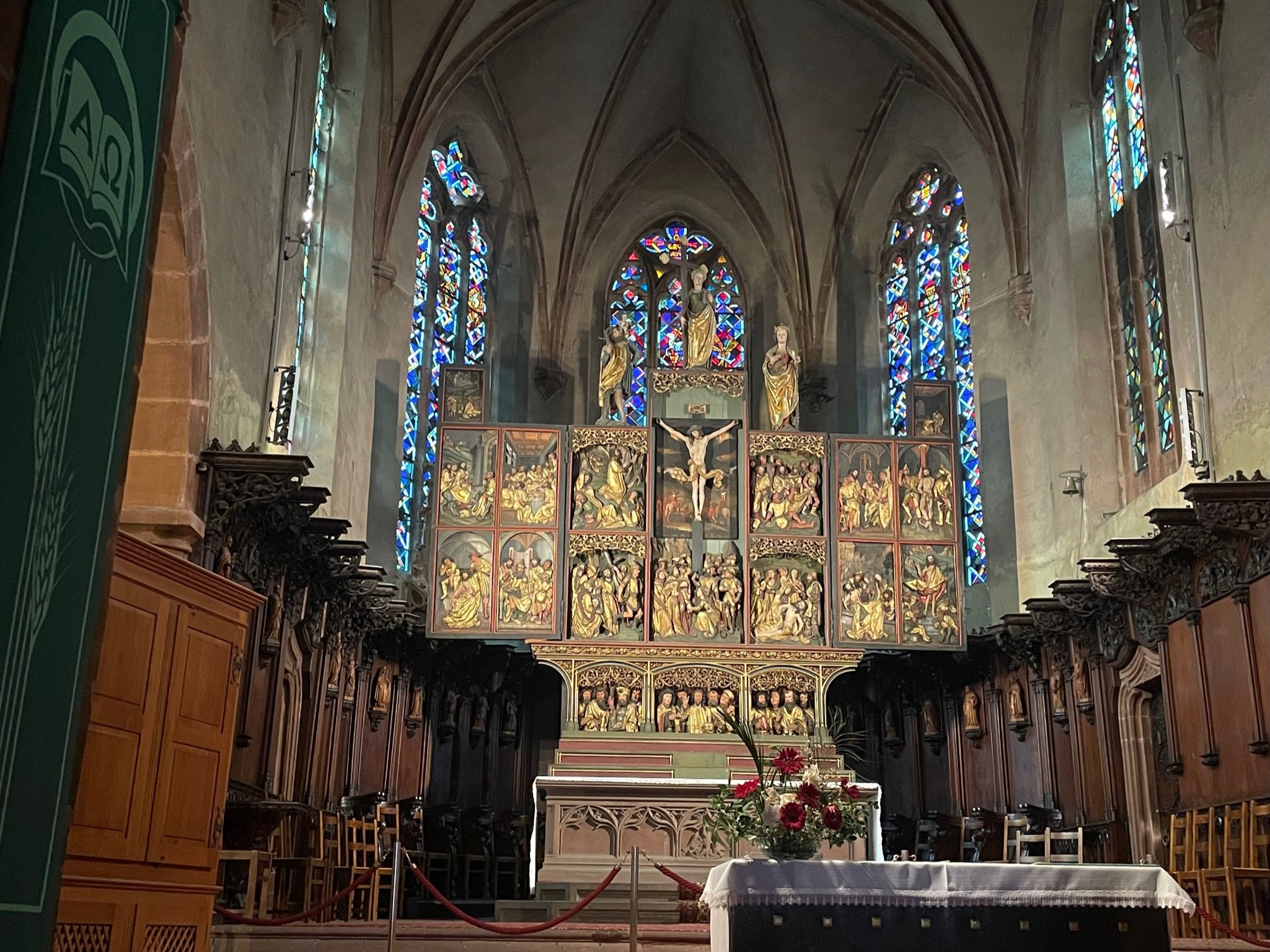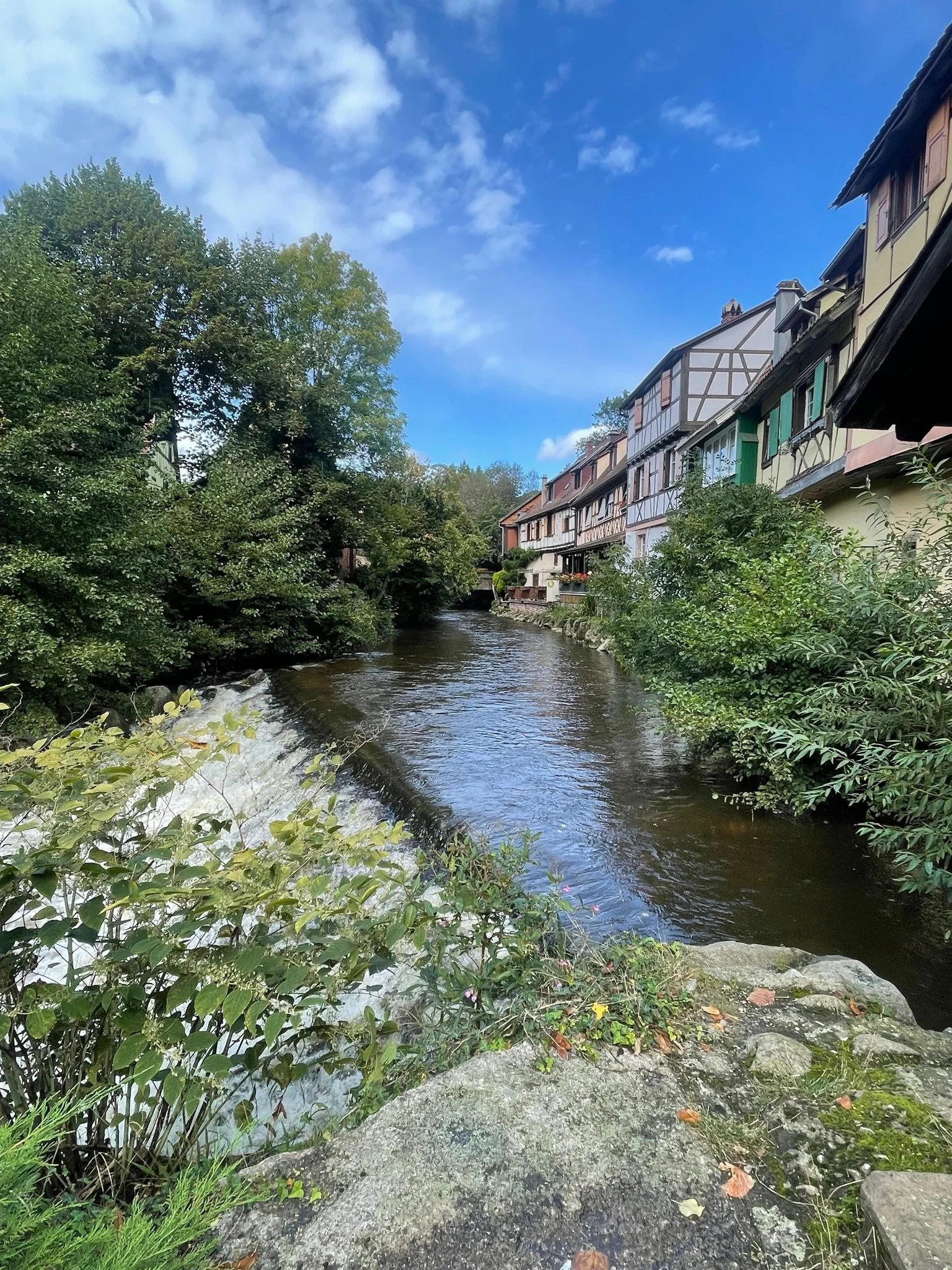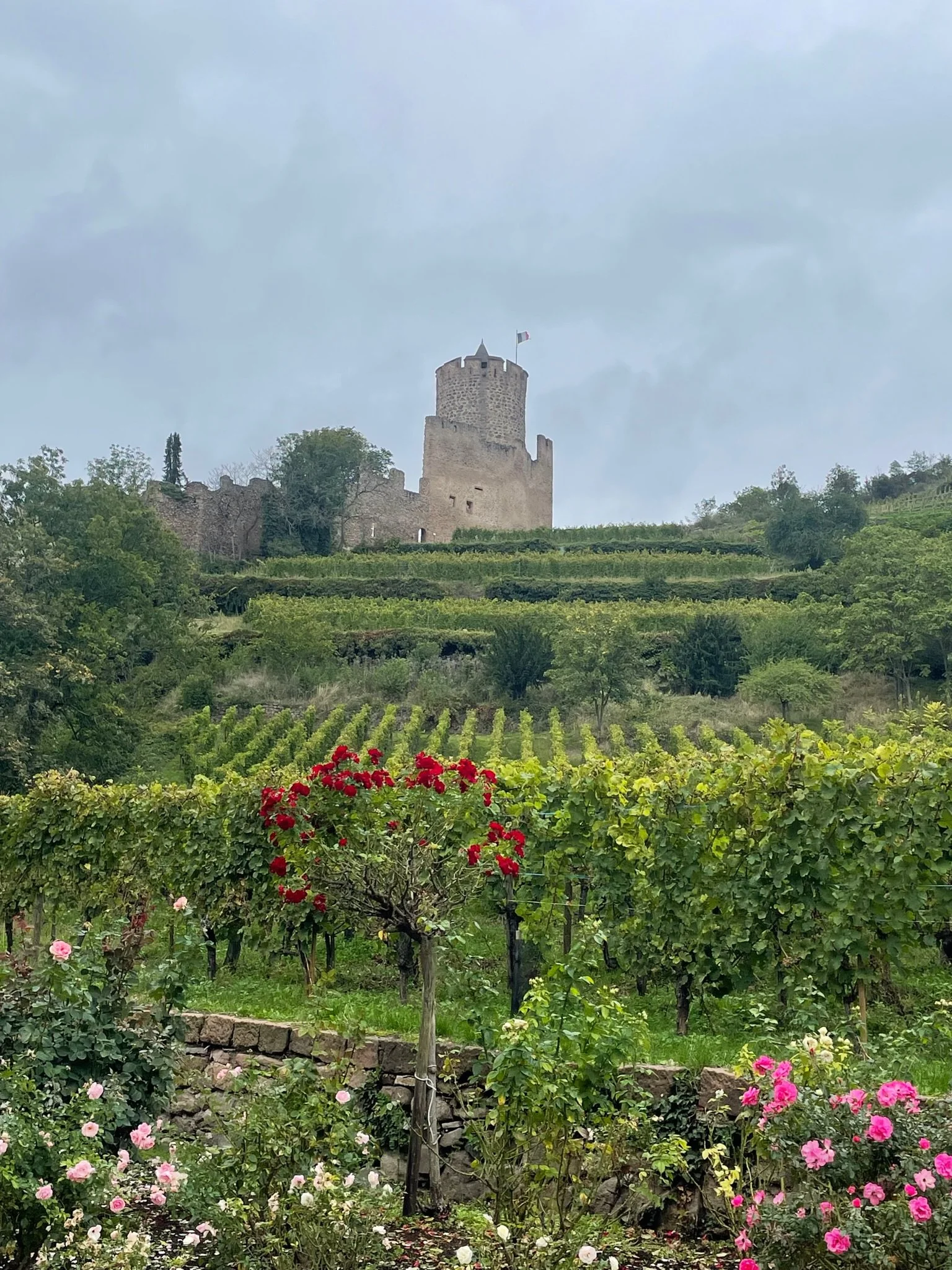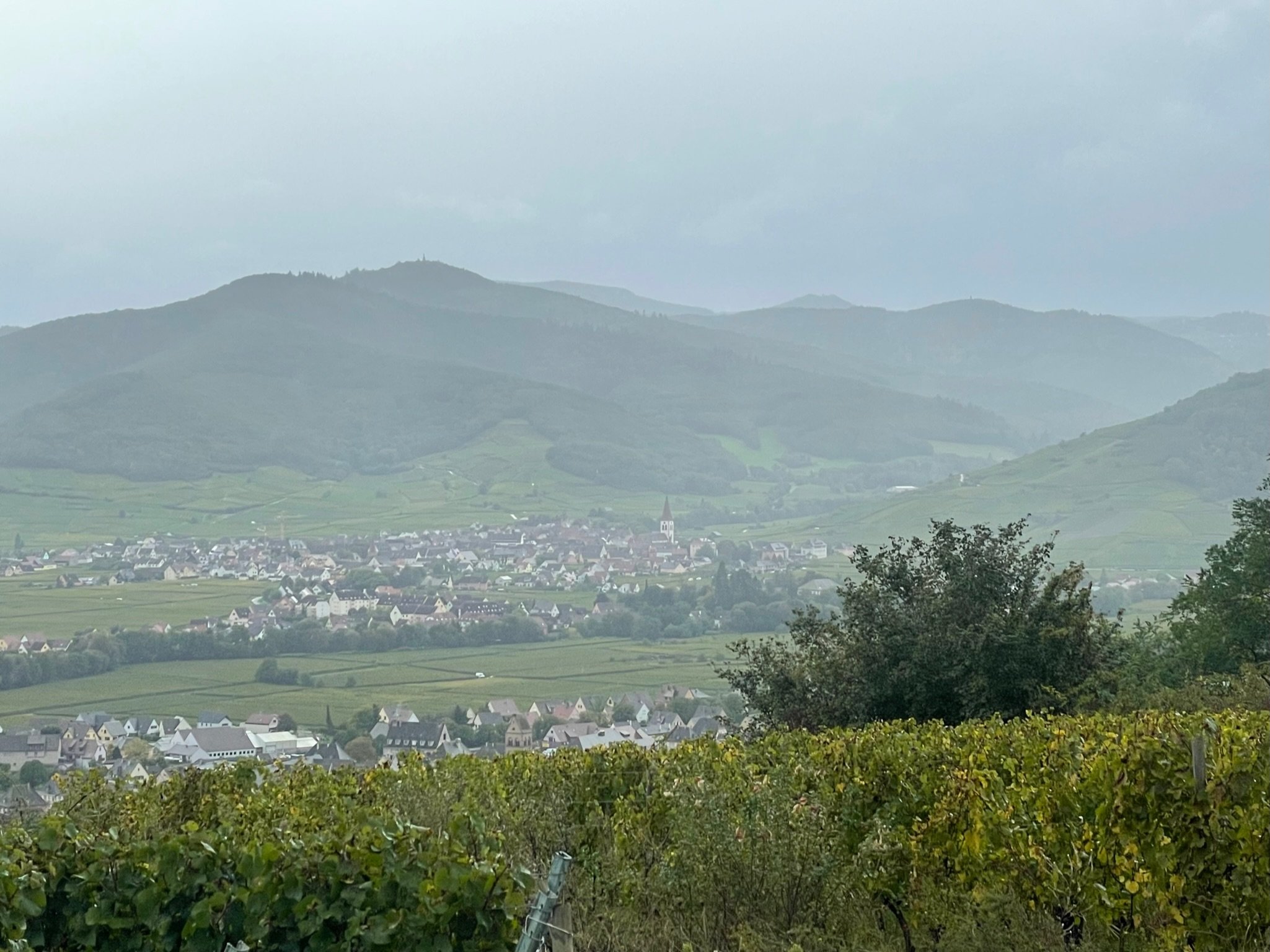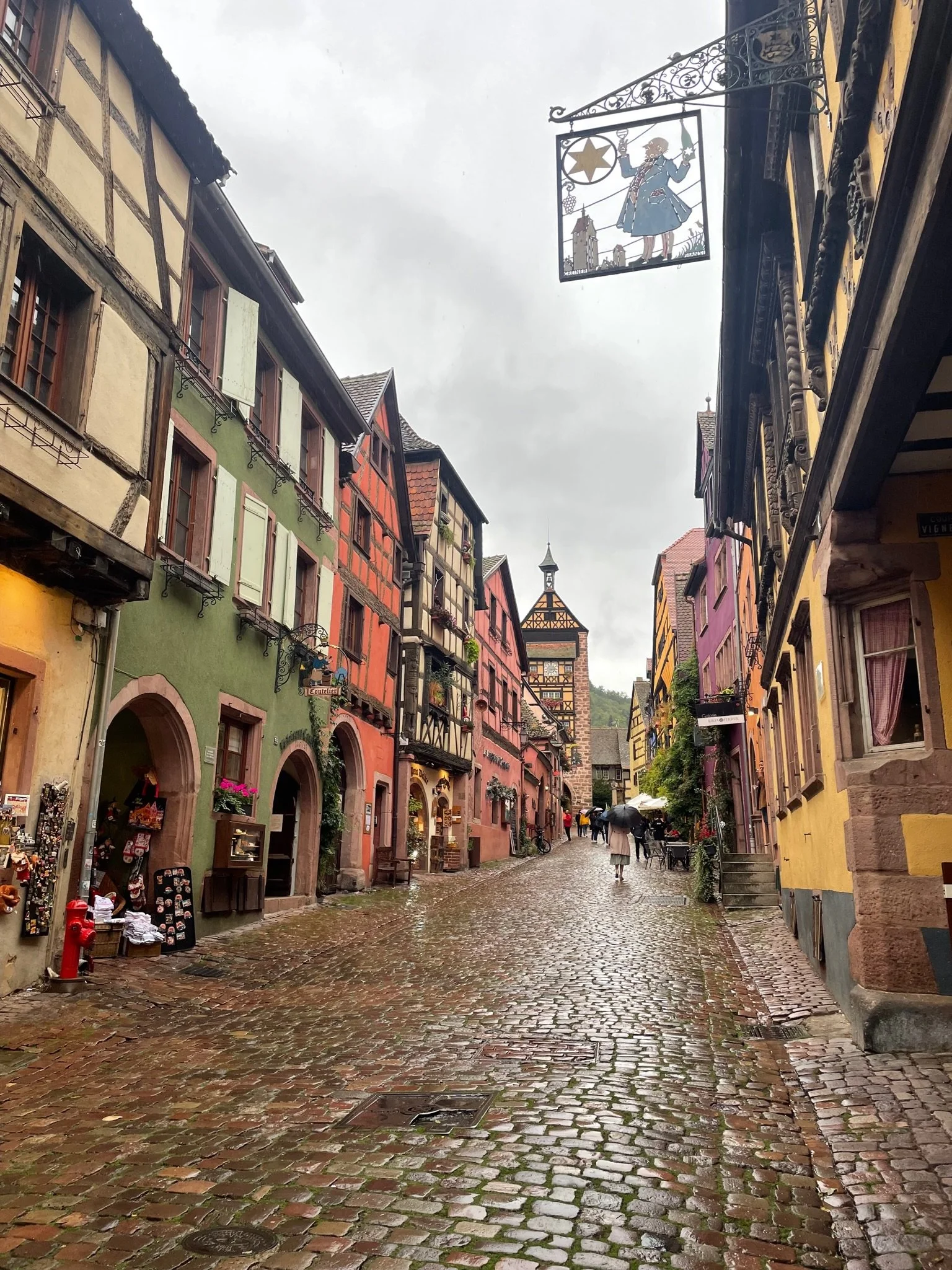Bourgogne & Alsace (T 25 – 32)
Having spent two weeks filling our brains, we were looking forward to a couple of weeks filling our wonder. Up next were two geographically close cities – Beaune in Bourgogne, and Colmar in Alsace – that turns out, couldn’t have been more opposite. Both boasted plenty of history and cultural influences, both were decidedly centered around wine, but one felt sophisticated and cosmopolitan while the other fanciful and picturesque. One was an imposing walled city dressed in seriousness and gray stone while the other vibrant and colorful with half-timbered houses overflowed with vines. While both took their wine production seriously, one was about structure, tradition, and exclusivity, the other about experimentation, approachability, and variety. Here’s how our week in these two cities went.
Beaune and its wine
Bourgogne grows two varietals: Chardonnay and Pinot Noir. That’s it. Tended by monks in the middle ages, wine cultivation became science when plots were rigorously rated by their vine-growing properties: soil, slope, sunshine, water, temperature. Mere meters can turn a plot from Grand Cru – and therefore command serious money – to mere Regional – deemed reasonable for everyday table consumption. Grand and Premier Cru plots can be shared by dozens of wine growers, sometimes with vastly different growing philosophies. One of my favorite stories was of a woman vintner who inherited her family’s plots in the 50s and 60s: Madame Lalou Bize-Leroy, who eschewed common practices and turned to organic before it was even a thing. You can still tell her rows apart because they are beautifully tall and wild compared to the precisely trimmed ones around hers. An original badass. In her 80s, her wines still get perfect scores and command thousands of dollars a bottle.
Sophia and I booked a private wine tour with an American – French couple who are sommeliers and who live and work in the area. We began the morning driving through the "Golden Triangle" of the Côte de Beaune, visiting the renowned Grand Cru sites of Puligny-Montrachet. This is where we learned about the Burgundy classification system and got a mini lesson in viticultural philosophies and different farming approaches from vintner to vintner. Next, we drove along the Route des Grands Crus to the village of Pommard, where we had our first tasting at Château de Pommard alongside Louis Vuitton-clad couples from England, US, and down-under and led by a sommelier in well-polished Italian leather shoes. You get the picture.
We continued along the Route des Grands Crus to Château du Clos de Vougeot, home to a Cisterian order of monks who played a big part in winemaking history, visited more celebrated vineyards, and ended our day at Domaine Ardhuy for a final sampling of regional, village, Premier Cru, and Grand Cru wines. I can’t say my palate is any better or wiser, but I do understand a lot more about the depths and complexities of this art and science they call winemaking.
Learning Beaune culture through cooking
One of our favorite activities was taking a cooking class with Terroirs by Adeline. We lucked out that her other client for the day canceled so we essentially had a private session that started with getting provisions at the famous Beaune farmer’s market, a sampling of incredible cheeses at the fromagerie and some bread at the boulangerie. From there, we walked to Adeline’s cooking studio which made me want to gut out my house and convert it into a huge kitchen. We spent time in her garden picking out a load of herbs and more veggies, then got to the hard work of tasting cheeses with our first wine pairing while things got prepped in the kitchen.
We loved Adeline and her stories. A pharmaceutical rep by training, she had grown up surrounded by the wine and food business as her dad was a winemaker representative who worked with starred chefs around the area to help them stock their cellars based on their seasonal menus. The subtleties of food and wine were instilled in her from infancy. Once she realized that was her calling, she opened a cooking studio as well as a wine club of carefully curated wines from vintners she personally gets to know to ship to clients around the world twice a year. (Yes, I signed up). It’s with her that we learned that the Grand Cru designation isn’t a guarantee for the best wine; that a winemaker’s process, innovation, and creativity are as great or greater determinants of amazing wine; that from year to year climate can have an extraordinary influence on the quality and quantity of the wine produced.
And our meal was, at least halfway through our trip, the best one so far in France. We made Burgundian gougères (cheese puffs), tomato gazpacho with 3-mustards ice cream, Poulet Gaston Gerard (chicken in chardonnay wine, Dijon mustard, and comté cheese sauce), carrots and fresh rosemary purée, and an amazing chocolate lava cake with homemade vanilla bean ice cream. And wine of course. Magnifique!
Beaune and its history
This story wouldn’t be complete with at least a nod to the city itself. Stately, historic, and with one of the most unique hospitals from the Middle Ages – the Hospices of Beaune. Stunning inside and out and an incredible practice of tending to the poor and underprivileged in a way that was downright pioneering in its time. While the hospital no longer operates in its original location, its foundation still fundraises through wine production and a yearly auction that shuts down the weekly farmer’s market for the weekend.
Walking into the fairytale that is Colmar
A little bougie-ed out by Beaune, we were ready to explore Alsace. The trip took us through the stunning hilltop village of Vézelay (unfortunately couldn’t find a good vantage point for a photo), an idyllic portion of the city of Bensançon and its surrounding Jura mountains, and onto the Vosges in Alsace.
Unlike in Beaune, where we stayed inside the old city walls, in Alsace we were in a B&B about a 10-15 minute walk from the centre ville. We were not prepared to be transported quite as fully into a fairytale land of color, vines, and flowers as we were when we first stepped foot in Colmar’s Little Venice. In this case, pictures speak louder than words, so here they go.
Alsatian wine
Our first evening in Alsace we went to a little Bistrot by the canal in Little Venice where Sophia enjoyed her first escargots in garlic butter as well as her first Gewürztraminer – a late harvest or vendage tardive version. She was a convert. Many will find late harvest wines a bit too sweet, but for us, it was so fruity, tropical, and oh so easily drinkable, that we found ourselves plotting when to return and/or how to find the winemaker and buy some extra bottles. We did the latter.
The next day was so rainy and miserable that our tour guide called and asked if we were open to moving our tour by a day (which we were) and we decided to drive to a couple small towns in search of a gf bakery and the said winemaker. Can’t say that driving in icky weather was my favorite, especially on the highway with speeding cars and humongous trucks, but the mission was successful, and we ended up with two regular Gewurztraminers and three late vintage from a wine tasting room that was in total contrast to Beaune.
Instead of the white marble floors, ornate columns, and fine Italian shoes, we were greeted by a grandma in a white apron and a booming voice who was happy to have us taste whatever type of wine we were into, sold us the bottles, and had us on our way with no pomp or circumstance. I have to admit we felt at home!
In contrast to Bourgogne, where only two varietals are grown, Alsace grows 7: Riesling, Gewurztraminer, Pinot Blanc, Pinot Gris, Muscat, Sylvaner, and Pinot Noir. Our wine tour allowed us to taste the four primary white varieties from different terroirs and different years, and we are happy to say that it only solidified our preference for the fruity Gewurz.
Alsatian villages
As part of our wine tour, we visited three smaller villages near Colmar: Eguisheim, Kayserberg, and Riquewihr. While the weather was a little better, it was still quite overcast with the occasional showers, so we couldn’t get as many shots of the beautiful villages as we would have liked, but they certainly didn’t disappoint. Each was picturesque, charming, and welcoming, although I have to say my favorite was Eguisheim, which was also our first, so the bar was set pretty high and not surpassed. All in all, Alsace was a hit and worth a visit. I hear Strasbourg is phenomenal too, so maybe next time we’ll add that in.
Next up: 4-5 hour drive through Switzerland to Annecy and the French Alps. And spoiler alert, my fear of heights will feature prominently. À bientôt!
